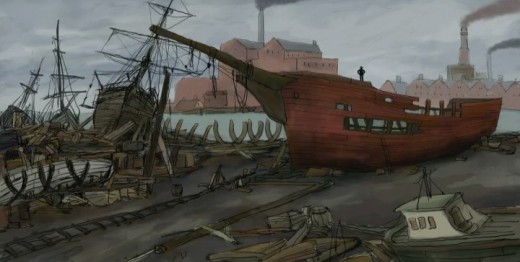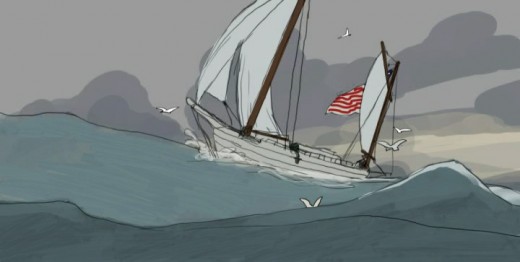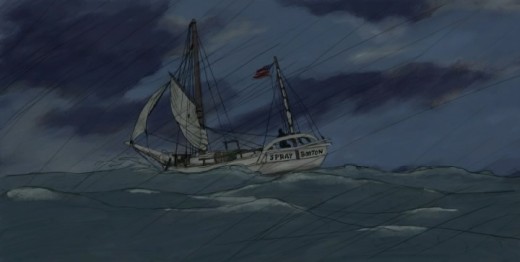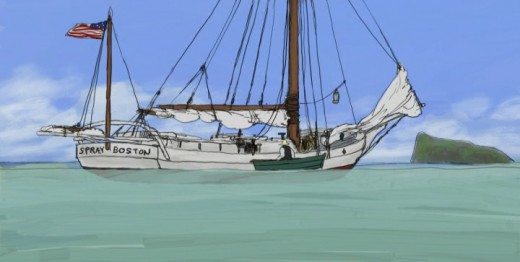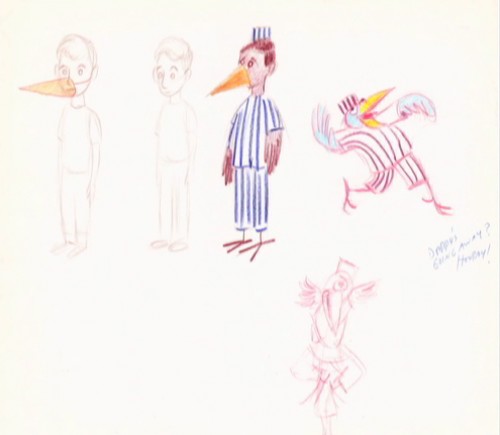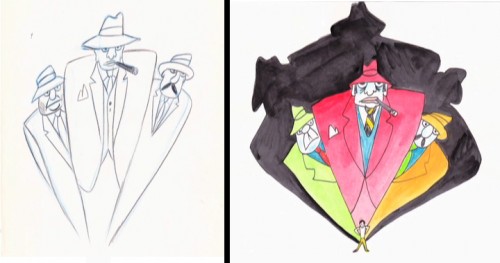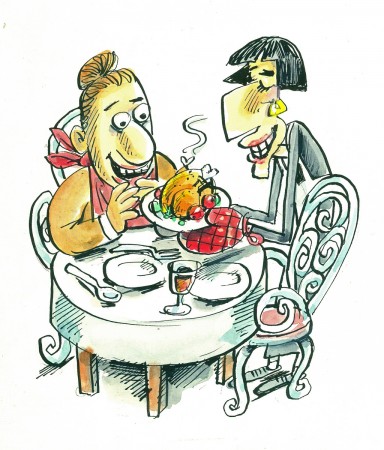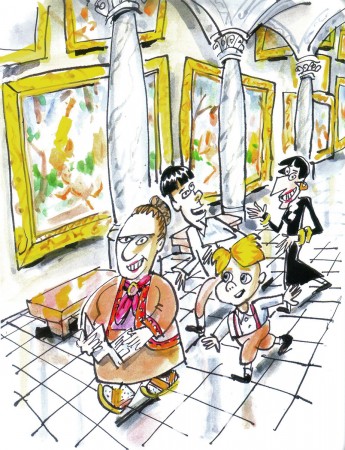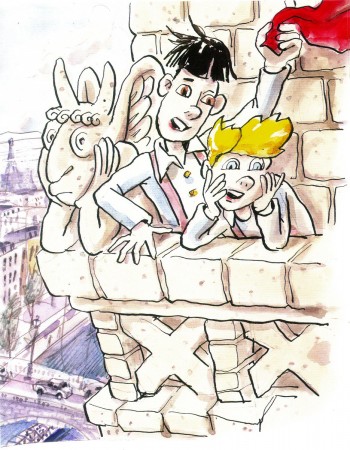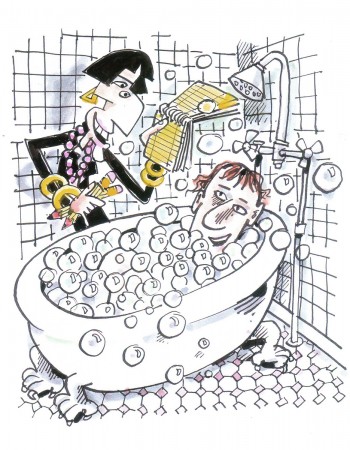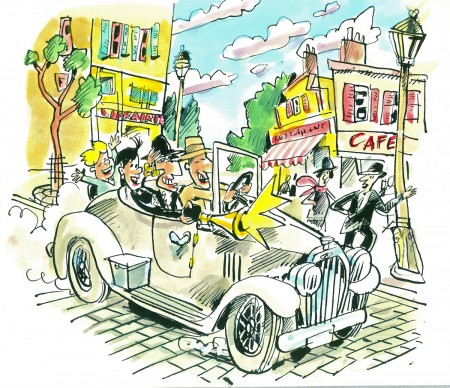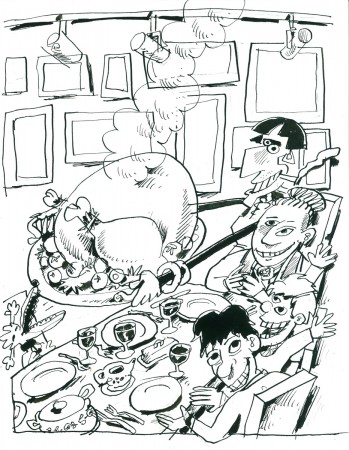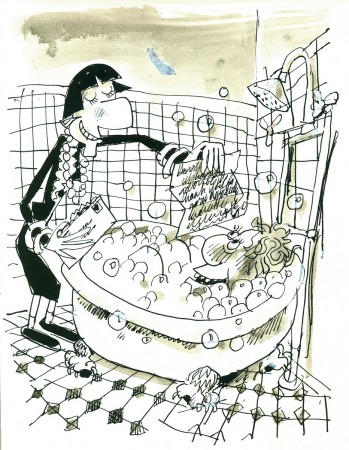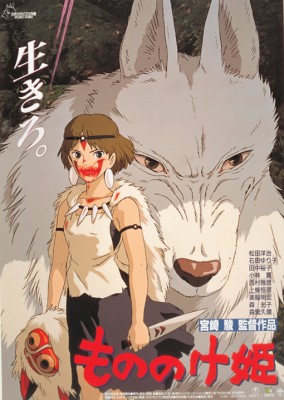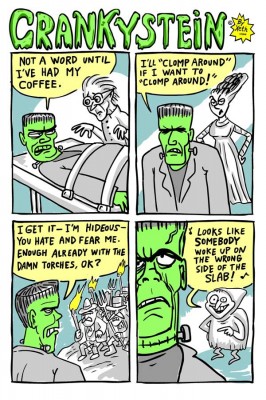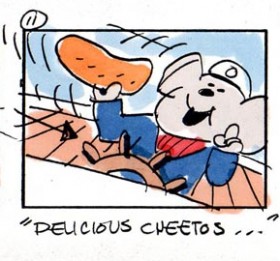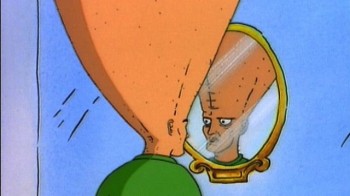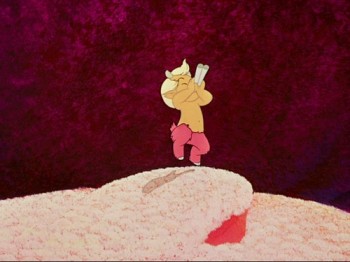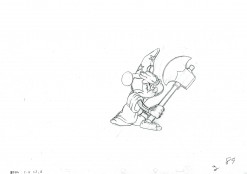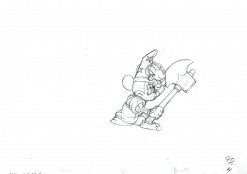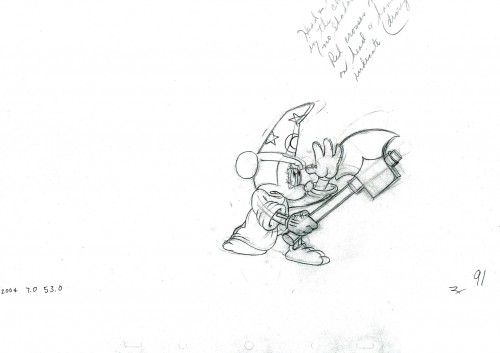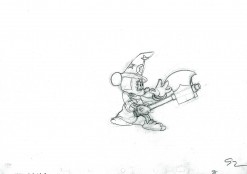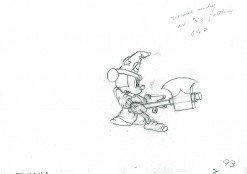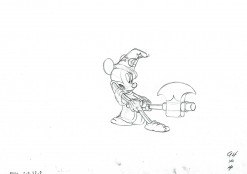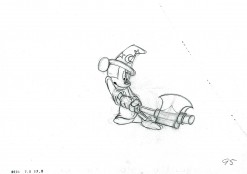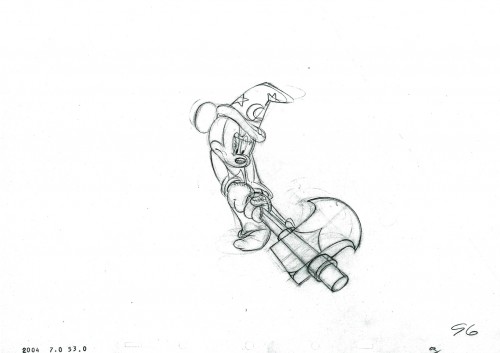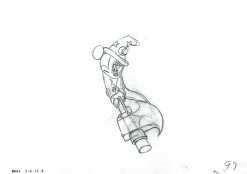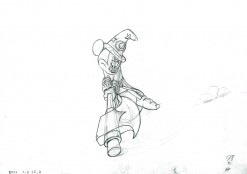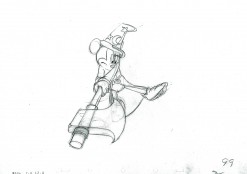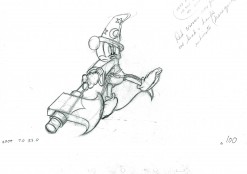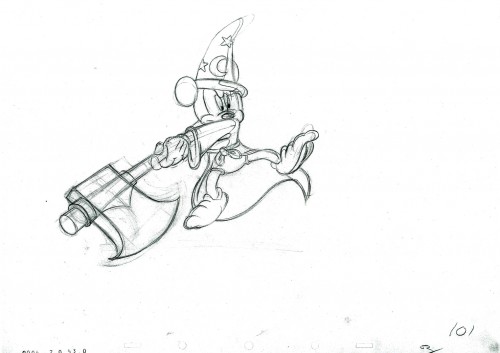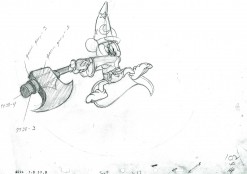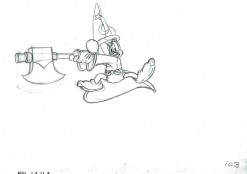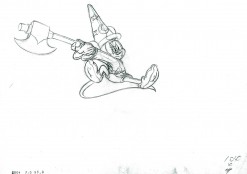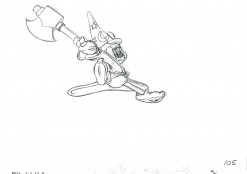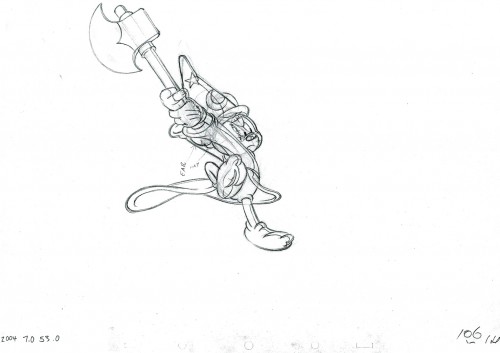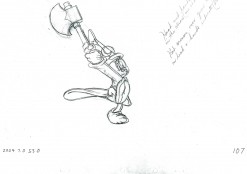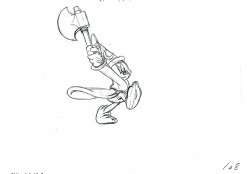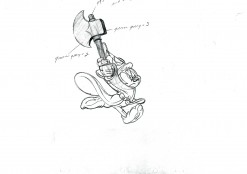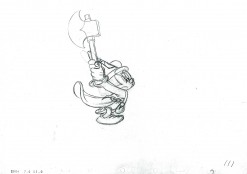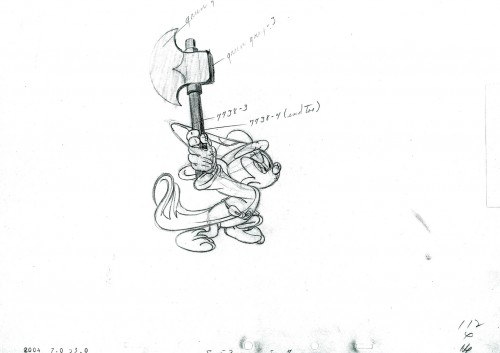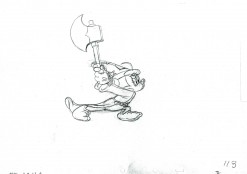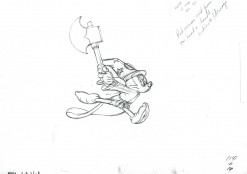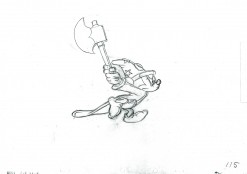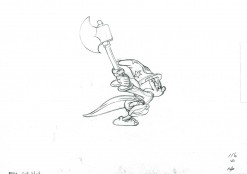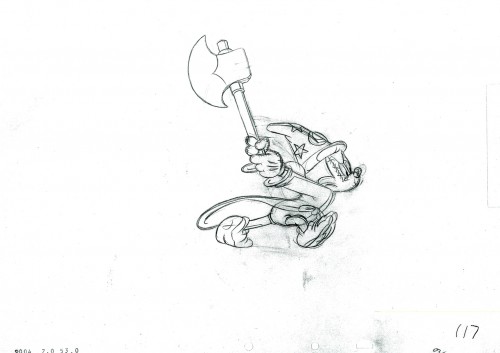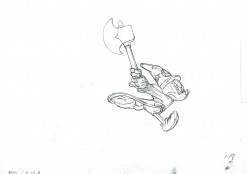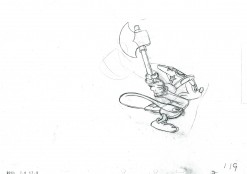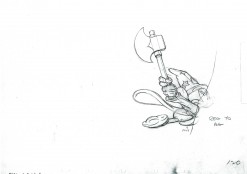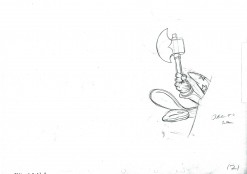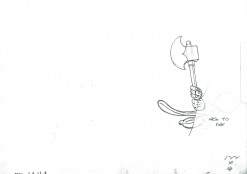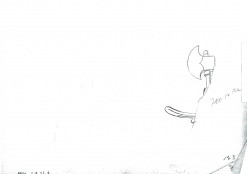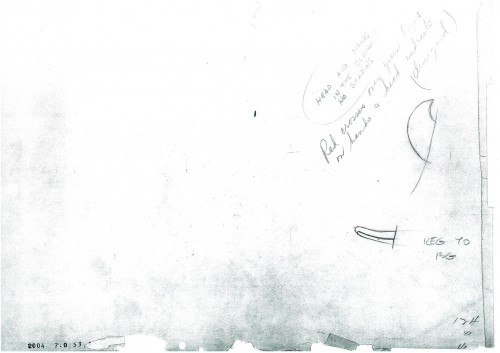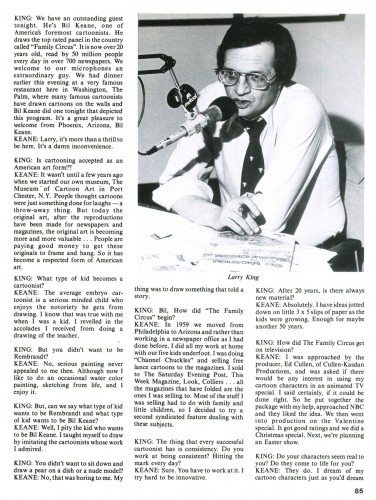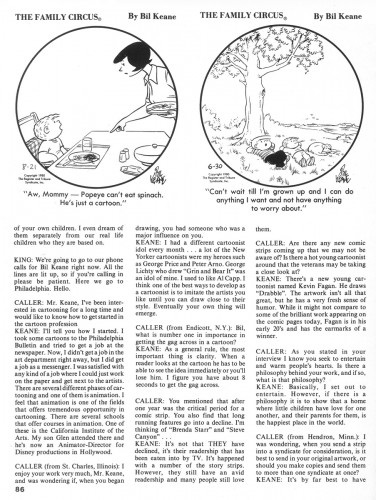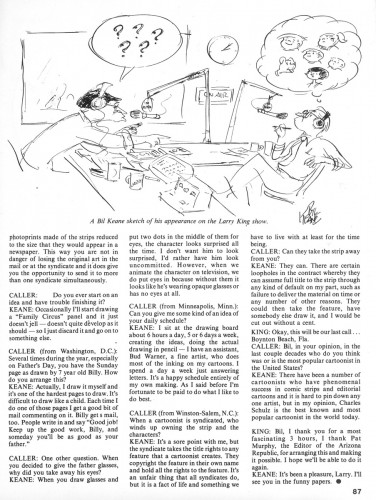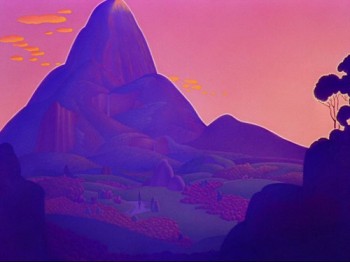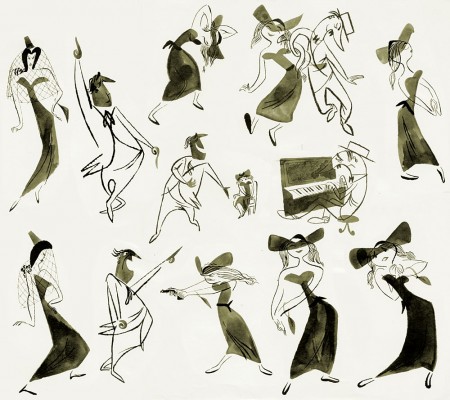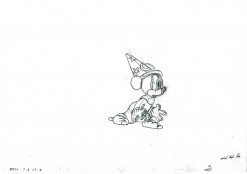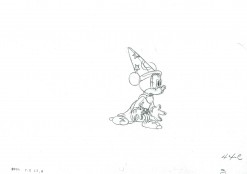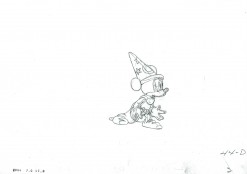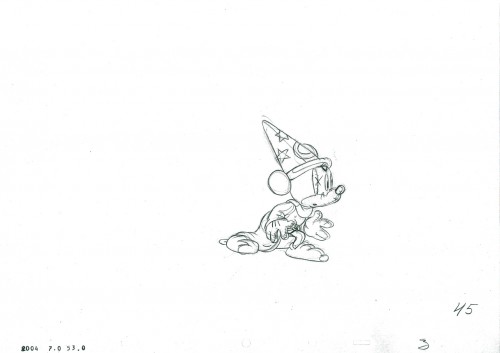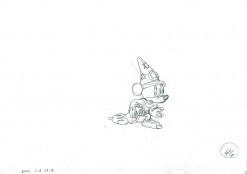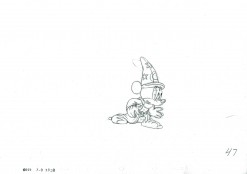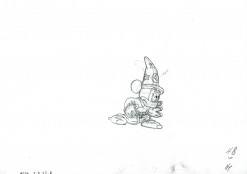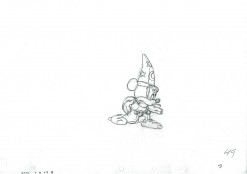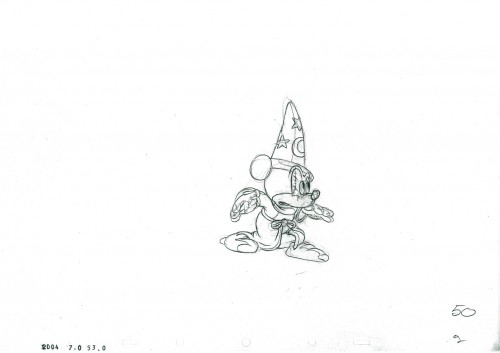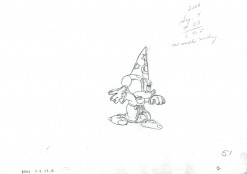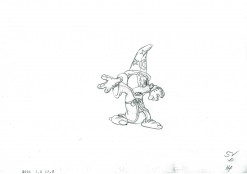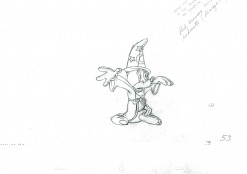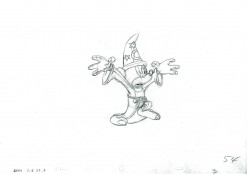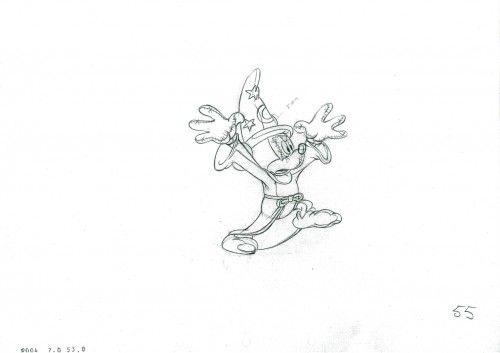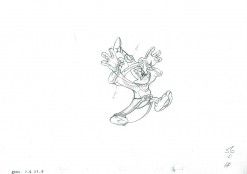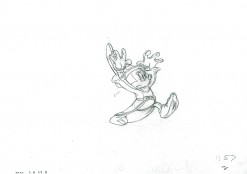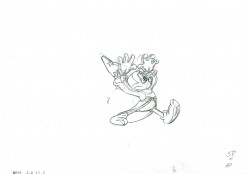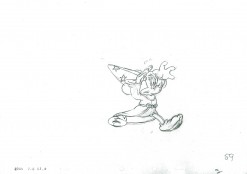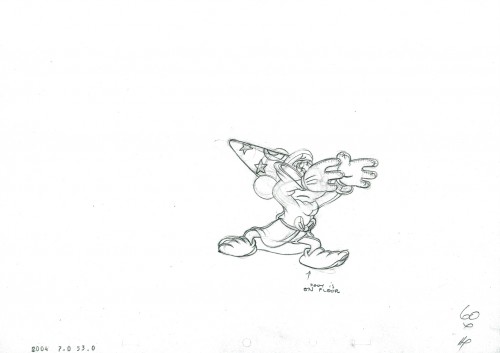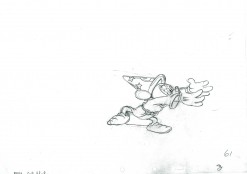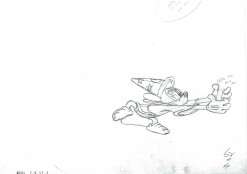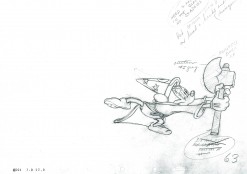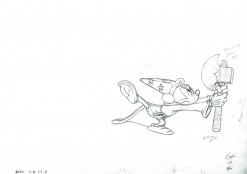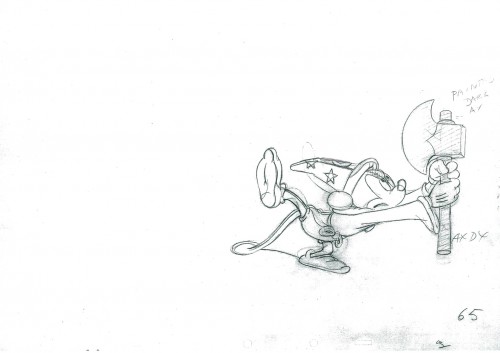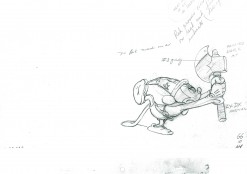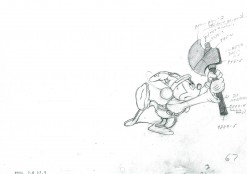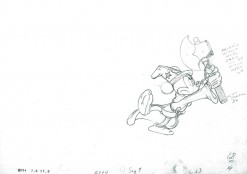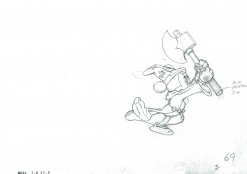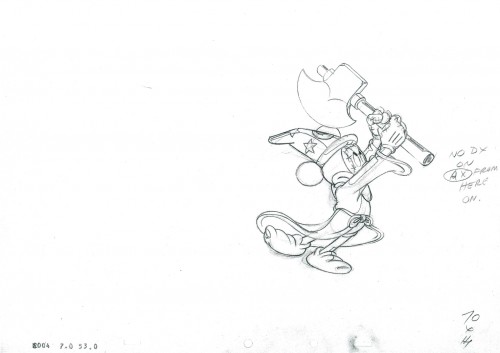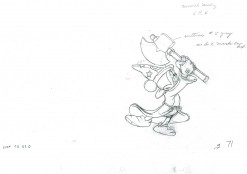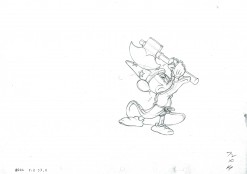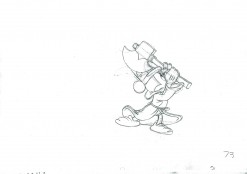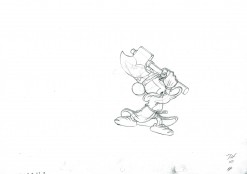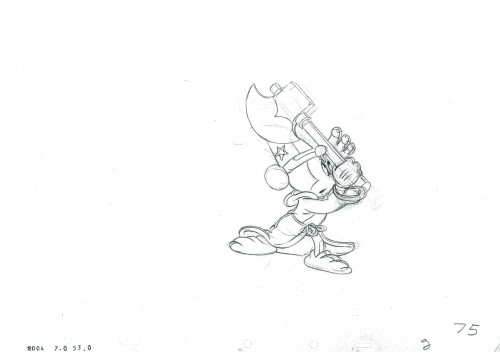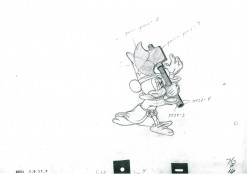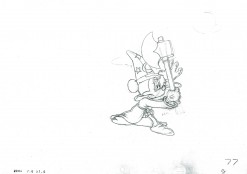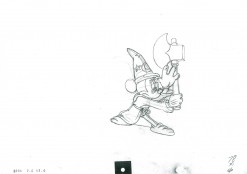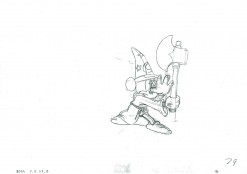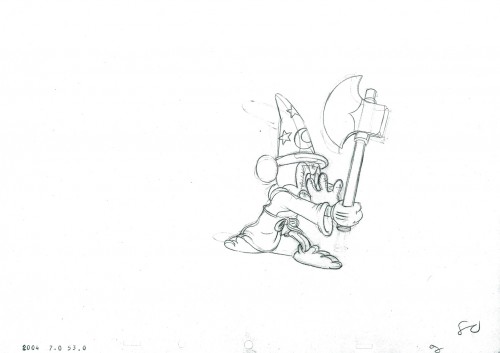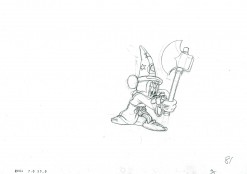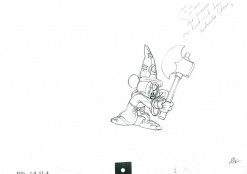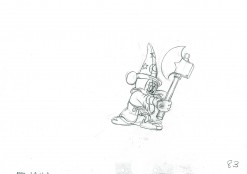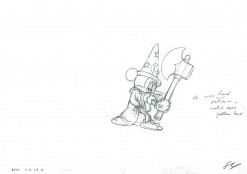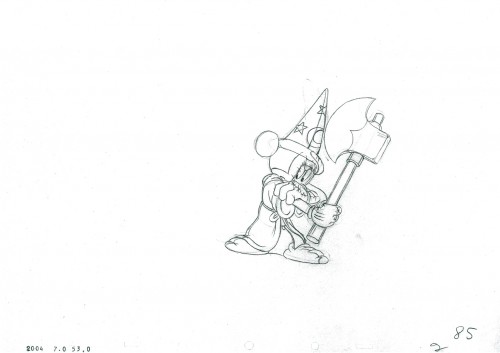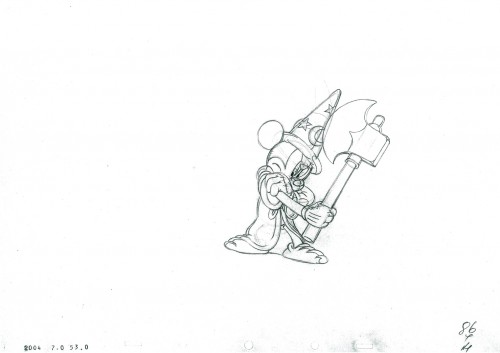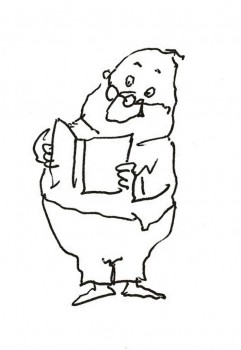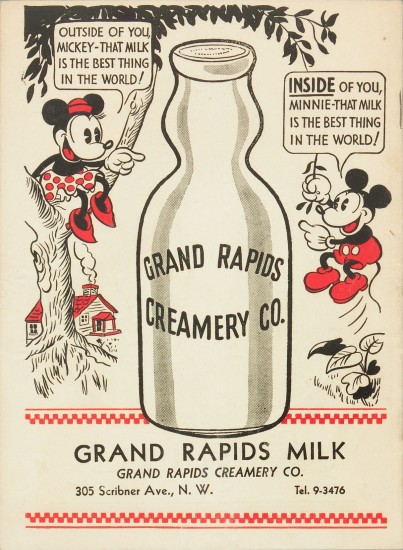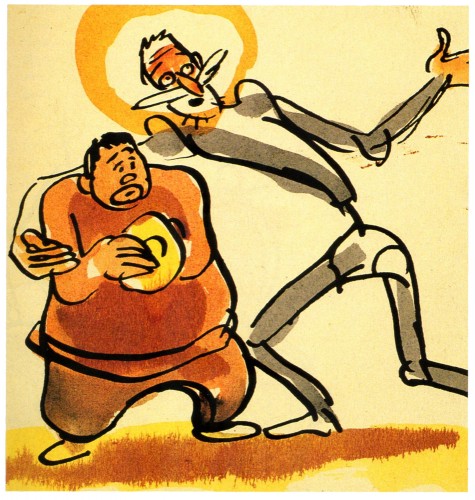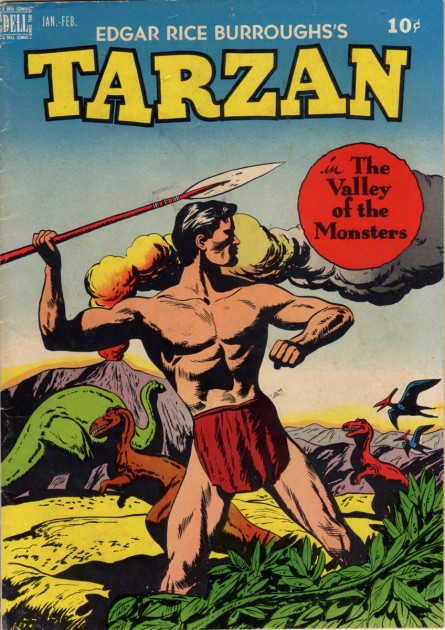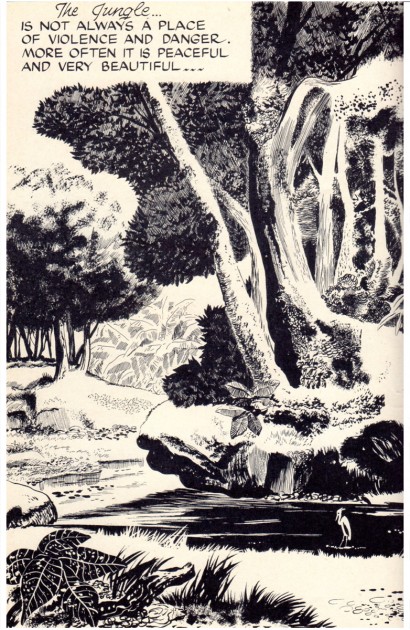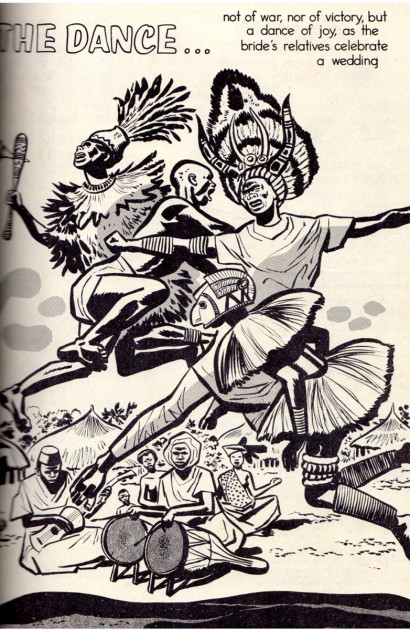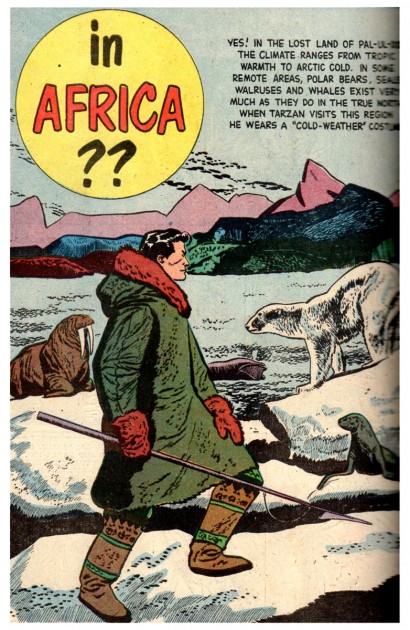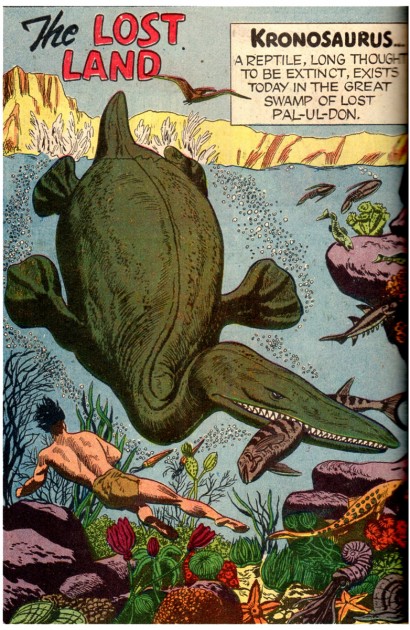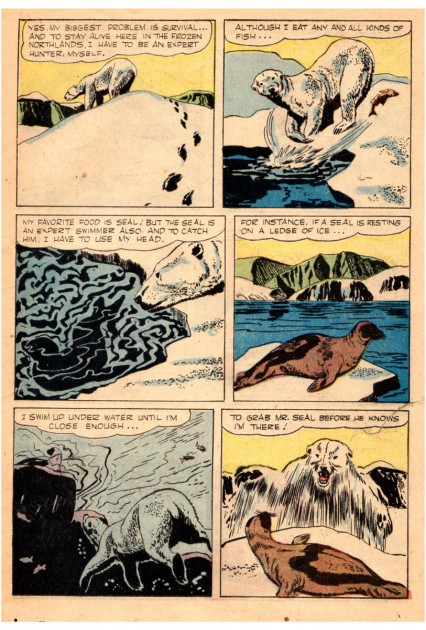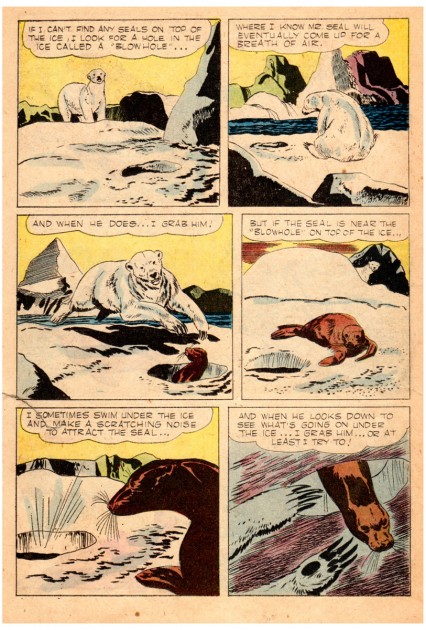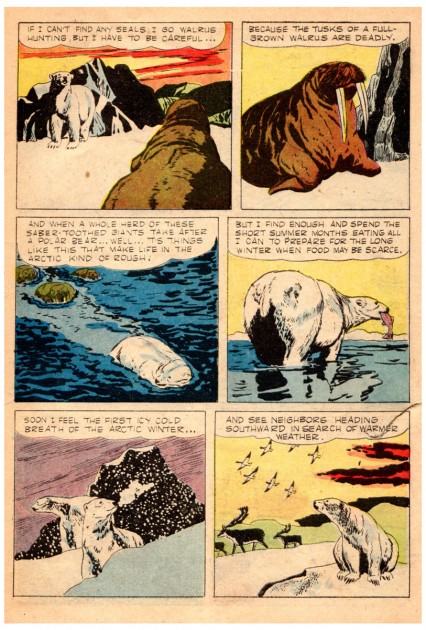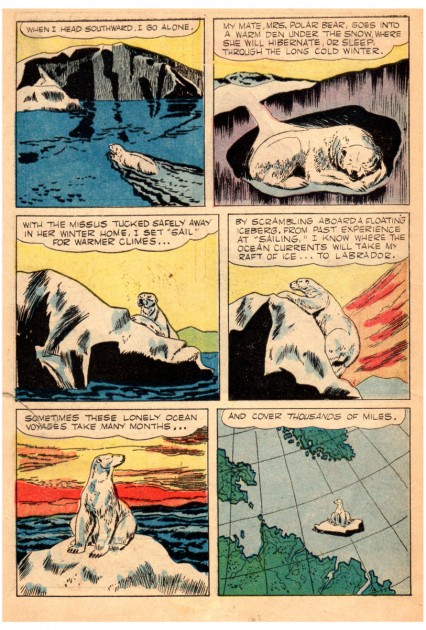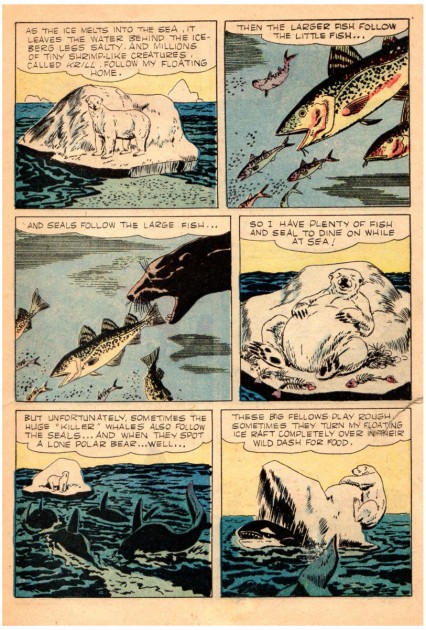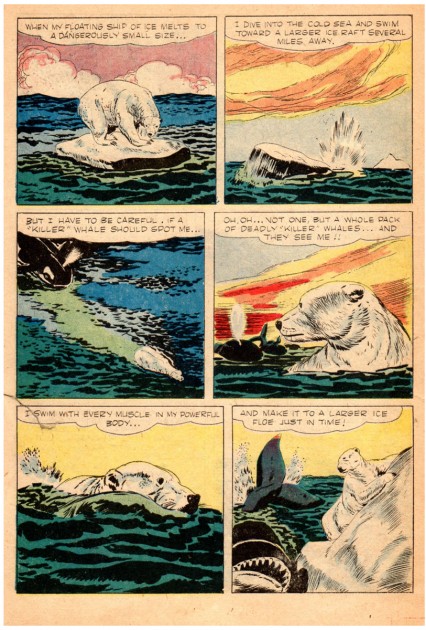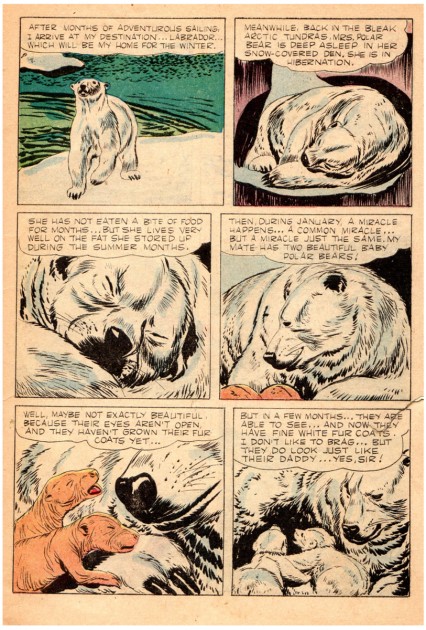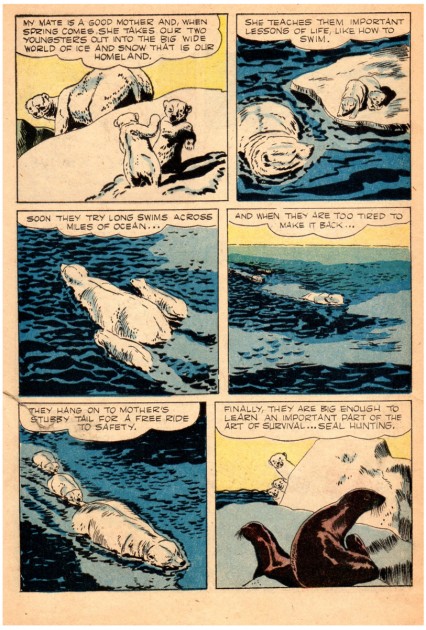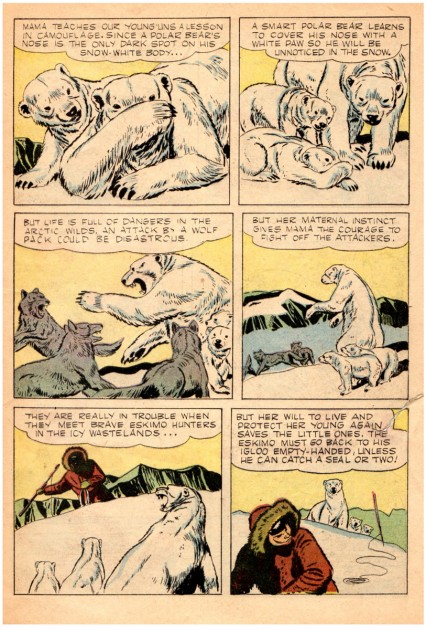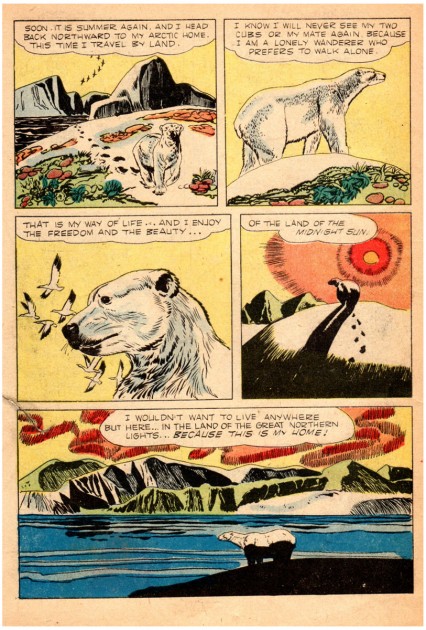Search ResultsFor "fantasia"
Art Art &Books &Comic Art &Illustration &John Canemaker &T.Hachtman 03 Dec 2011 07:45 am
Paul & Sandra and John and Tom and Bill
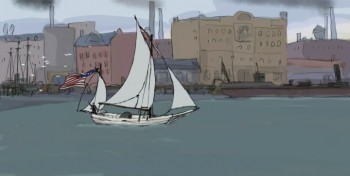 - This past Thursday night, Paul and Sandra Fierlinger presented an hour’s worth of their latest project at Parson’s School. The film, Slocum at Sea with Himself, tells the story of the first person to have sailed SOLO around the world.
- This past Thursday night, Paul and Sandra Fierlinger presented an hour’s worth of their latest project at Parson’s School. The film, Slocum at Sea with Himself, tells the story of the first person to have sailed SOLO around the world.
The film was a work in progress in every sense of the phrase. It started in full color, included scenes over final Bgs that weren’t colored and had other scenes that were pure pencil test. The sound was predominantly music composed and performed by the brilliant Shay Lynch. (You may know his music from the many films he did for Jeff Scher.) Yet, it all stood with a great dignity as a strong piece.
The film was full of potential to be even greater than their last feature, My Dog Tulip. Imagery was stunning and beautifully designed and animated (as usual from this team). It was a real treat seeing the work in progress, and it was easy to fill in the gaps. The movie takes place almost completely on water, and it’s amazing the effects they’ve achieved in animating such a difficult project. I was wholly taken by it.
As monumental as the screening was – truly inspirational, the talk Paul gave in advance was thought provoking. They are making the film with their own money and planning to release it online in short segments. All told the feed would take about six months to receive the entire feature. To buy these feeds, which will be built into a website that would constantly change for each segment, will cost about $30 in total. They’re hoping for a built-in audience of boaters and leisure craft enthusiasts around the world. Slocum is a well-known story to these folk, and the likelihood that they’d have interest in the subject is great.
Theirs is a provocative idea for distributing the film, and the business model Paul presented seemed original and probably a successful one. It will take some time before the feature is finished, but I’ll be watching closely to see how successful they’ll be. I’d bet on them, too.
There is no doubt of the love they’re pouring into this project. Take a look at these stills:
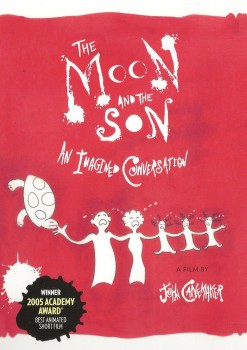
- The Moon and the Son: An Imagined Conversation, John Canemaker’s animated short, is now available in a special edition DVD. This powerful and moving film, which has won both the Academy Award and the Emmy Award, explores the difficult emotional terrain of father/son relationships as seen through Canemaker’s own turbulent relationship with his father.
The Moon and the Son combines many different elements from John’s remembered versions of the facts, to the actual evidence of the life on screen: the trial transcripts, audio recordings, home movies, and photos. The original and stylized animation tells the true story of an Italian immigrant’s troubled life and the consequences of his actions on his family. The film features the voices of noted actors Eli Wallach and John Turturro in the roles of father and son.
The DVD includes the complete 28-minute film and the following bonus materials:
- A new documentary detailing the film’s creative evolution, influences and reception, with animation director/designer John Canemaker and producer Peggy Stern.
- The first rough cut (working title: “Confessions of my Fatherâ€) with original soundtrack
- A Photo gallery of production sketches, preliminary artwork and storyboards
I enjoyed thumbing through all the extras on this DVD. When the film was being made, John shared its progress with me at several stages. I’m intrigued with how much material was there in the development. As a long time friend with John, I felt I’d known some of the story over the years. But the film, and now the new material, give me larger insight to the full story. Spending time reading the storyboard (one of the extras) again – having seen the film several times – allowed me to see some of the background which shaped John’s quest to tell this story.
The DVD is available now on Amazon.
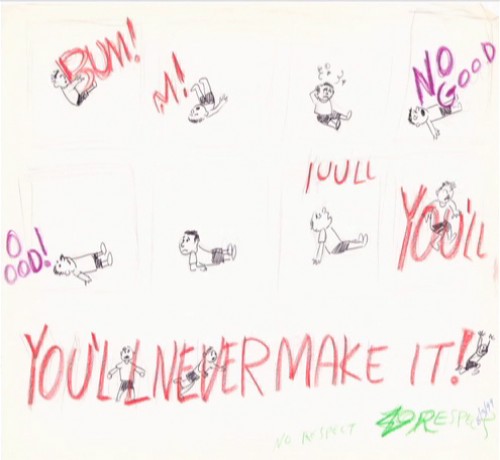
A somewhat Feiffer-like page within the storyboard.
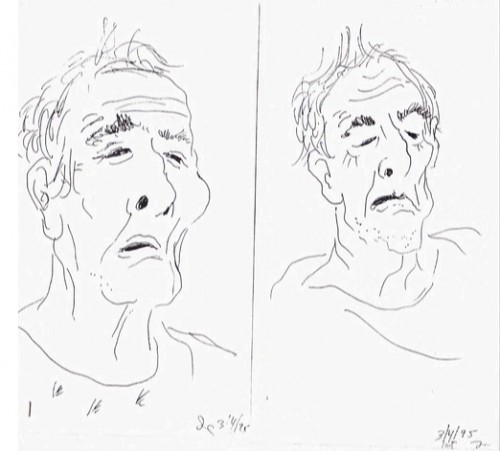
A very “Canemaker” sketch that reminds me a bit of a Picasso sketch.
There’s lots more on the DVD.
____________________________________
- Tom Hachtman has seen an unusual turn with his Gertrude and Alice characters. You’ll remember that he’d developed a comic strip, Gertrude’s Follies, built around Gertrude Stein and Alice B. Toklas. A friend and admirer of the strip, Hans Gallas, has written a children’s book around Tom’s characters, and Tom illustrated the book. Now that book’s been published, and can be purchased from their site. Gertrude and Alice and Fritz and Tom is a charming account of what happens when Gertrude and Alice have to take care of a couple of young boys during their stay in Paris.
Here are some of the book’s exuberant illustrations.
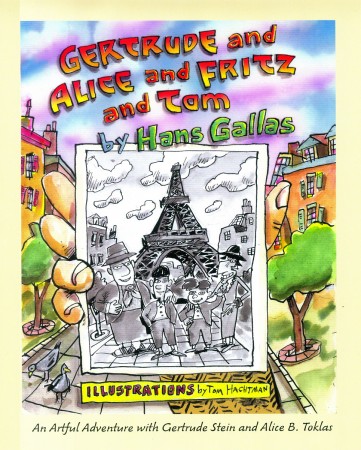
The book’s cover
And here are some of Tom’s original sketches for the book.
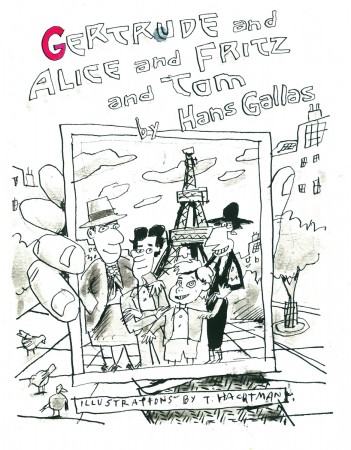
Original sketch for the cover.
Très different from the final.
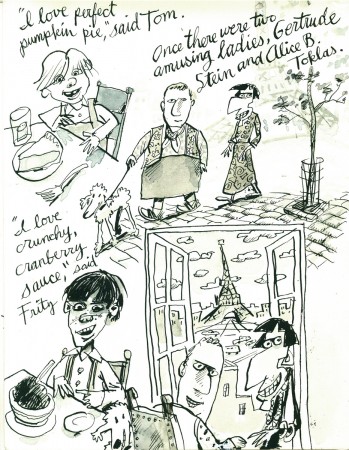
A preliminary sketch for a lot of pages
_____________________________________________________________________
_____________________________________________________________________
- Bill Benzon, on his blog New Savannah, has finally completed his treatise on Fantasia and has published it in a PDF form. You can download this here for a great read. 96 pages of intelligent discourse on the feature. This document contains his original, and shorter commentary on the Pastoral sequence. For his longer take on that sequence download this document.
Bill Peckmann &Commentary &commercial animation 19 Nov 2011 07:55 am
Oscars, Miyazaki, & other things
- This was a packed week. I saw a lot of films; I mean a lot. Here are some short short comments.
Sunday: My Weekend with Marilyn The movie was good; Michelle Williams was out of this world. She’ll definitely be nominated. B+
Monday: Saul Bass Tribute The film titles were brilliant (though I would have had a larger assortment.) The logos were magnificent. All of the speakers were dull. B+
Tuesday: Puss in Boots Some brilliant design work, a few nicely animated scenes. Tiresome plot with an exhausting sound track. C-
Tin Tin The same problem as Puss in Boots. Go Go Go Go Go, then it’s over. LOUD sound track and never resting camera. Spielberg has it constantly moving around and over and under the characters. For no purpose other than to show that he can. Zero character development. C
Wednesday: The Descendants This was a very fine film. A seemingly relaxed pace to a somewhat chaotic story. George Clooney was fine in the lead role, and others around him were equally good. A-
Thursday: The Artist A fun and very romantic film. The 10 mins where they steal Bernard Herrman’s soundtrack from Vertigo was my favorite. Nice acting. B+ Harvey Weinstein threw a great after party.
Friday: Dinner with friends. A large contingent of Academy voters came down from Canada and are staying with Candy Kugel and George Griffin so they can attend the voting today. I joined Candy and the others at dinner and had a good time catching up. Three cheers for Candy for coordinating events with this group (Last night, there were 11 of us out to eat.)
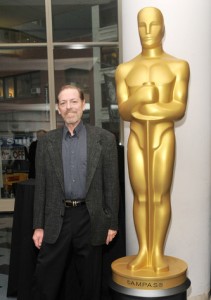 - Today there’s the Academy screening of animated shorts in NY – 45 of them. This is the first vote on the full list of those that have successfully qualified for the competition. It certainly doesn’t mean that any of them are good; it just means that they’ve followed the rules.
- Today there’s the Academy screening of animated shorts in NY – 45 of them. This is the first vote on the full list of those that have successfully qualified for the competition. It certainly doesn’t mean that any of them are good; it just means that they’ve followed the rules.
Today’s voters will select a group of 6 to 10 films to make the short list. These will be open to another voting in January to narrow it down to the five nominees.
45 shorts will probably take about six to seven hours to screen. All in one sitting with a one hour break for lunch. Usually, the lunchtime conversation isn’t about the films but about general conversation. You have to be careful not to insult any film makers who might be there.
The full list was laid out on Cartoon Brew this week. It was only two years ago that I listed those competing and received severe warnings from the Academy for having done so. Now, they release the titles, themselves. It’s something they should have been doing all along.
Hopefully, the films will be a better assortment than last year’s selection.
December 16 to Thursday, January 12 will be Studio Ghibli time in NYC. G-Kids will present a retrospective of Miyazaki‘s feature films at the IFC Center in New York this Christmas. The titles to be shown include: Spirited Away, Princess Mononoke, My Neighbor Totoro, Nausicaa of the Valley of the Wind, Castle in the Sky, Ponyo, Howl’s Moving Castle and Kiki’s Delivery Service. All will be shown in both dubbed and subtitled versions.
- The brilliantly funny Xeth Feinberg has been posting Reasons 2B Happy on a daily basis. It’s the only way to get through that first cup of coffee. Check it out . . . DAILY.
- Leif Peng has posted four storyboards for Cheet-o’s Mouse commercials done by Bill Peckmann. They’re on the site: Storyboard Central. They were done in the style of Paul Coker Jr. for PK&A (Phil Kimmelman & Ass.)
MTV has put up 20 episodes of The Head on their video website. If you’re a fan of this Eric Fogel show, you can now watch the online for free. The Head is the 5th series, joining Aeon Flux, The Maxx, Wonder Showzen, and Liquid Television on the site.
- And Bill Benzon continues with his assessment of Fantasia’s Pastoral Sequence. He’s just finished his fifth piece and has one more left in him before wrapping up the entire film.
Action Analysis &Animation &Animation Artifacts &Disney 16 Nov 2011 07:14 am
Mickey and the Brooms – 3
- This is the third part of the famous scene from Fantasia wherein Mickey Mouse finally kills off the non-stop broom. He axes it into pieces. This post concludes all the drawings of Mickey; from here on out we have Mickey’s shadow doing the dirty work.
The scene was animated by
Riley Thomson with an assist from Harvey Toombs.
The sequence was directed by Jim Algar.
This is production #2004- Seq. 7 – Scene 53. It runs 28 ft. 3 frs.
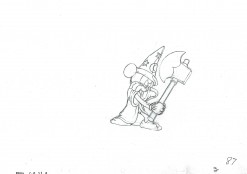 87
87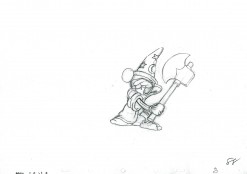 88
88
____________________________
The following QT incorporates all the drawings from this post
as well as the previous posts, Part 1 & Part 2.
All drawings were exposed per the Exposure Sheets.
Independent Animation &repeated posts 14 Nov 2011 08:20 am
Pups of Liberty – a recap
- In October 2009 I was impressed with the work of Jennifer & Bert Klein‘s Pups of Liberty, a short film they had completed. It was a fully animated short, and a lot of work went into it. I decided to pose some questions and interview them via email.
I was reminded of this in the past week when they dropped in at my studio just to say hello. They had business in NY and were there for a packed two days. We spent a really pleasant couple of hours and talked about our divers careers in animation. Having just met them for the first time I was surprised at how much we had in common.
After our meeting, I took another look at the two pieces I’d posted and thought I’d like to show them again. So here they are. We start with the first post in which I interviewed them for the site, and then we move onto the second post where I try to showcase some of the artwork.
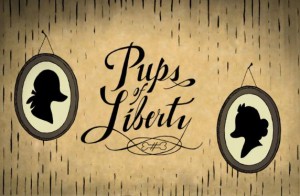 - The fortune of having a modestly successful blog is that some filmmakers actually approach me in order to get the word out about their films. Such was the case with Jennifer & Bert Klein‘s Pups of Liberty. They sent me a link to their site which offered a trailer for their short film, and they offered to send me a DVD of the entire film.
- The fortune of having a modestly successful blog is that some filmmakers actually approach me in order to get the word out about their films. Such was the case with Jennifer & Bert Klein‘s Pups of Liberty. They sent me a link to their site which offered a trailer for their short film, and they offered to send me a DVD of the entire film.
When I looked at their site and trailer, it was obvious this wasn’t your average short. I saw the very full animation, beautiful backgrounds, and I looked deeper.
I saw the credit list and the names of James Lopez (Animator on Hercules, Emperor’s New Groove, Flushed Away and Princess and the Frog), Eric Goldberg (Animator on Aladdin, Fantasia 2000, and Princess and the Frog), Barry Atkinson (BG artist on Prince of Egypt, American Tail and The Lion King), and Mark Henn (Animator Ariel, Belle, Jasmine, Mulan and Tiana) among others. I had to see this film.
I wasn’t disappointed. The animation is sterling in the richest of full animation; the Bg’s are beautifully styled to feel like the period (the Revolutionary War) they’re meant to suggest, and the Direction couldn’t be cleaner or clearer or more focused. The film doesn’t waste a shot, but drives itself through the story in a very economical approach. Yet not a dollar seems to have been spared in making this the extraordinarily lush film it is.
I had to respond to Jennifer and Bert Klein to ask for a short interview and they responded with answers to any question I posed and plenty of supportive material. Hence, I’ll post that Q&A today with some stills from the film, and tomorrow some amazingly attractive pre-production artwork. This film deserves a book of its own.
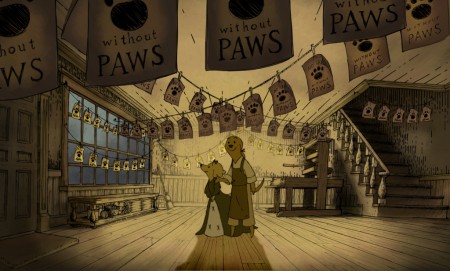
All images copyright © 2009 Picnic Productions
The Interview
Michael – What prompted you to develop this story? It reminds me a bit of Disney’s Johnny Tremaine in the way that it focuses on a particular craftsman and his daughter, just as the live action film focused on a silversmith and his apprentice. Was there any inspiration from that film/book? Animation wise, it feels a bit like Ben & Me. Perhaps that’s because of the subject.
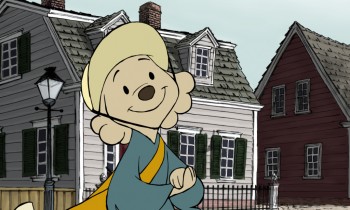 Jennifer – I have always loved this era of history (Colonial/Revolutionary America) so when I first began developing an idea for a new short it was the first setting that came to my mind. I wanted to make a story that was quality and that a viewer would feel good about watching; I was also very interested in how to teach people concepts (like taxation and representative government) with a media like animation.
Jennifer – I have always loved this era of history (Colonial/Revolutionary America) so when I first began developing an idea for a new short it was the first setting that came to my mind. I wanted to make a story that was quality and that a viewer would feel good about watching; I was also very interested in how to teach people concepts (like taxation and representative government) with a media like animation.
The story of the Boston Tea Party seemed like an iconic event to start with, since most American school kids learn about it pretty early on. The more I researched the more I was drawn to the story of the printer who started the Sons of Liberty. I love the idea of a group of ordinary people getting together to motivate change in their world, and I liked that that is something that translates internationally, to everyone.
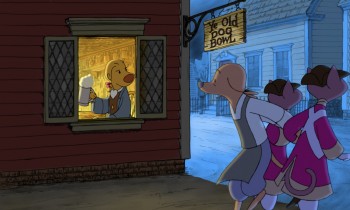 I grew up watching Robin Hood because it was the only Disney movie we had. At some point I saw Ben and Me and I have always liked that one a lot too. I like allegorical story telling, fables… so it seemed natural to tell the story with animals. In a way it lightens up the mood of it having a political bent- because really, they are talking dogs and cats.
I grew up watching Robin Hood because it was the only Disney movie we had. At some point I saw Ben and Me and I have always liked that one a lot too. I like allegorical story telling, fables… so it seemed natural to tell the story with animals. In a way it lightens up the mood of it having a political bent- because really, they are talking dogs and cats.
Bert – We initially considered making a film about the first Thanksgiving with cats as pilgrims and birds as the native Americans. We moved ahead in time a bit and did the Boston Tea Party instead.
I’m sure you don’t want to discuss your budget, but you must have gotten a lot of incredibly talented people to volunteer to help you make the film. (Eric Goldberg, Mark Henn et al). The expense easily looks quite high.
Michael - Was the budget completely out of pocket?
- How did you create such enthusiasm for the project to do so?
- Now that you’ve finished what is your hope for distribution or future development?
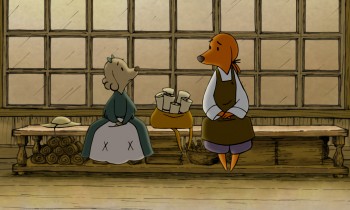 Jennifer – Our budget was all out of our own pocket. We might be a little crazy I guess, but this is what we do. It’s our hobby. Bert and I are very passionate about making shorts, and when we began the project we were also very interested in keeping ourselves in practice for 2d animation at a time when there weren’t any other 2d features being made at any of the studios. Our friends who worked traditionally started to hear about the film and we would have evenings with everyone over and do pencil tests and see them cut into the storyreel – and we’d always have pie, I would bake every night for the crew. The nights started to take on a family atmosphere, and I think everyone felt very comfortable to come and practice their art that they had been trained to do. Everyone was working at their highest skill level– Mark Henn was doing 20 feet a week, James Lopez stretched himself and all of our layouts, we had cleanup people doing the most beautiful work I had ever seen from them. I can’t say how we “created” enthusiasm because you can’t consciously create something like this. You’re just darned lucky that it happens.
Jennifer – Our budget was all out of our own pocket. We might be a little crazy I guess, but this is what we do. It’s our hobby. Bert and I are very passionate about making shorts, and when we began the project we were also very interested in keeping ourselves in practice for 2d animation at a time when there weren’t any other 2d features being made at any of the studios. Our friends who worked traditionally started to hear about the film and we would have evenings with everyone over and do pencil tests and see them cut into the storyreel – and we’d always have pie, I would bake every night for the crew. The nights started to take on a family atmosphere, and I think everyone felt very comfortable to come and practice their art that they had been trained to do. Everyone was working at their highest skill level– Mark Henn was doing 20 feet a week, James Lopez stretched himself and all of our layouts, we had cleanup people doing the most beautiful work I had ever seen from them. I can’t say how we “created” enthusiasm because you can’t consciously create something like this. You’re just darned lucky that it happens.
We are submitting the Pups to film festivals, so we will have about 2 years worth of that, and then we’ll see what happens. My biggest hope would be for a series. I would also love to see it in the classroom one day.
Michael – It must have taken quite some time since I doubt you were able to work steadily on the film and had to fit it in between other jobs. (I’ve seen your resume and know you’ve been busy outside of this film.)
- How long did it take to make, given your work schedule?
- How were you able to maintain such a consistent (and consistently high level) look while working on it on a long, piecemeal schedule? (Assuming that was the case?)
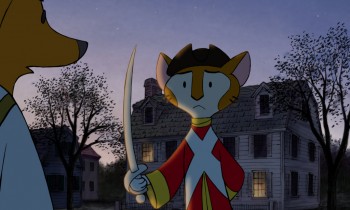 Bert – Most of the production took place during spare time over a two year period. The births of our two kids stretched out the last bits almost another two years.
Bert – Most of the production took place during spare time over a two year period. The births of our two kids stretched out the last bits almost another two years.
One way we ensured consistency was having Jennifer do clean up keys over the different animators’ drawings to maintain the style. Mark Henn did a lot of animation on the film and helped raise the bar for everyone else. One person (James Lopez who was a supervising animator at Disney for a decade) did all of the layouts. I animated a lot of it myself and just kept working on it until it was done. Our assistant director Hyun-Min Lee was invaluable to us in getting this done, tackling technical problems, organizing scenes and x-sheets, and trackreading amongst many other jobs.
Jennifer – I took some time off to work on the film, so I was able to dedicate all of my time to it. I did the boards, designed the characters, did reds for the cleanup keys. I think that the simplicity of the characters saved us a lot of line mileage and made it possible for the artists to get through the footage quickly. They also look best against the backgrounds, which are done in a hand drawn pen-and-ink style and required something simple to contrast with them. We looked at the printwork from the time for inspiration- Paul Revere’s engravings especially really had a ‘homemade’ colonial feel, and you can see his personality in them and in the brush strokes of color used that we tried to invoke.
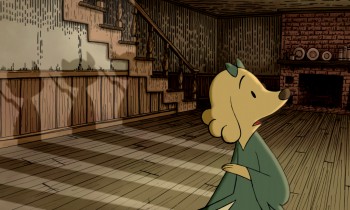 It is hard to sit down and work after you have worked a full day, but I always remembered something Bert would say- “Even if you just get one drawing done you are one drawing ahead.” So I’d try and get one scene’s worth of layouts done a night, or read a track, or just something, and we’d inch forward until we were done.
It is hard to sit down and work after you have worked a full day, but I always remembered something Bert would say- “Even if you just get one drawing done you are one drawing ahead.” So I’d try and get one scene’s worth of layouts done a night, or read a track, or just something, and we’d inch forward until we were done.
Michael – Just as American Tail was compared to MAUS, your film has already received a comment on Cartoon Brew comparing it. There are very obvious differences, but I wonder if you thought about this possibility?
- Or worried about it?
- Did you ever question the idea of doing it with humans?
- Or would that have made you focus even more on historical accuracy?
Bert – I heard of MAUS, but I’ve never read it. Our main reason to make this was purely a labor of love. I watched Jennifer do great work as a story artist on lots of feature projects for studios that never got made or changed radically from the first inception. She was one of the original story artists on Where the Wild Things Are when it was a fully animated feature back in 2001. I wanted to produce a film that was a showcase for her story sensibilities because I felt that it might be the only way to get that pure vision to the screen. We also hope that people and their kids can enjoy it.
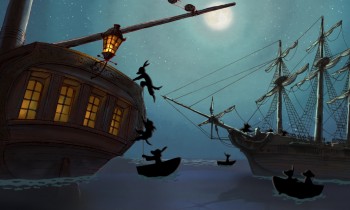 Jennifer – Honestly I never heard of Maus. Whatever subject matter you make a film about though, there will always be something to compare it to — how many films are there about aliens? Or zoo animals? A setting is just a setting- it’s how you hook the audience in, how you make them really feel for and believe in your characters, and the experience that you give them that matters.
Jennifer – Honestly I never heard of Maus. Whatever subject matter you make a film about though, there will always be something to compare it to — how many films are there about aliens? Or zoo animals? A setting is just a setting- it’s how you hook the audience in, how you make them really feel for and believe in your characters, and the experience that you give them that matters.
Doing a historical film with humans instantly makes it more serious- doing it with animals, you can’t take it as seriously and you can have more fun with it. Why animate humans when you can animate talking dogs? It made us laugh. We did it this way so that we could have some fun, and do what we love to do.
Having interviewed Bert and Jennifer Klein, I found myself with a lot of beautiful artwork and test footage to show. In posting it, I’ve kept the text descriptions, below, written by their Production Designer, James Lopez.
You can view a trailer from their film here.
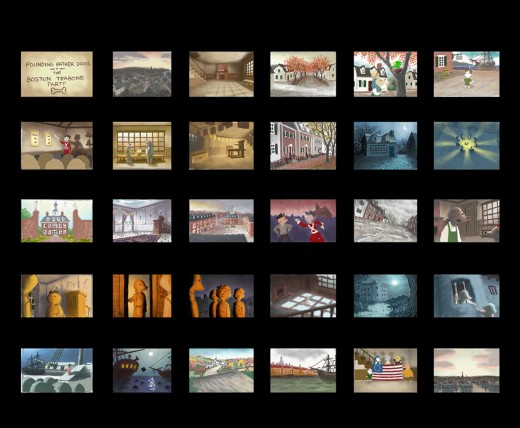
Pups of Liberty Color Script by James Lopez
For the colors, warm colors were chosen to represent the dogs’
surroundings and, in contrast, cool colors to represent the cats.
To start the film, the colors were to portray a pretty town but not
a vibrant one. Only as hope comes alive and tensions run high (The
Boston Tea Party & The Riot) are the more vibrant colors introduced.
Color influences came from some classic Disney films and a desire to
use natural lighting (direct & indirect) as opposed to “staged†lighting.
The story of the movie is left somewhat unconcluded so at the finale,
rather than going full-blown with color, there is a hint at what would be
to come (as the story’s narration suggests).
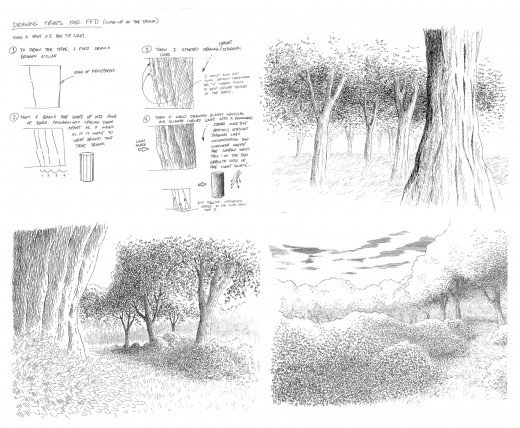
Pups of Liberty - Drawing Trees
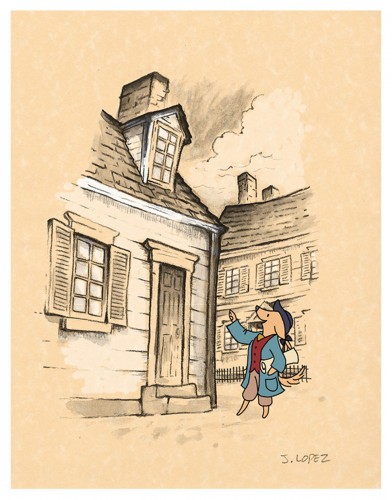
Pups of Liberty - In the style of Anton Pieck
Initally, the backgrounds were going to be influenced by the stylings
of Dutch artist Anton Pieck. Studies were made to see what the style
would look like with a Colonial theme.
A composite was made with the paint study and the character over
a parchment texture. We we were happy with the result of how the
drawn character married into the drawn environment.
It was a nice style but it involved a unique application that was a labor
to produce and proved to be impoprobable so we explored other, more
traditional styles.
We later settled for a pen and ink application on vellum paper in the
rough drawing style of the late Ken Anderson. It allowed us to stay
loose and if there were any mistakes or changes to be made, they
could still be done on paper.
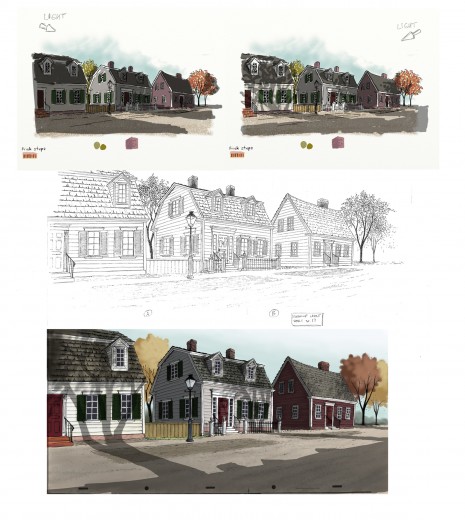
The top two illustrations are visual development for the color and
lighting treatment on the houses. The desired effect was trying to
capture the drama of the shadows cast from the trees by the sun
set low on the horizon.
The middle illustration is a clean-up layout by James Lopez
The bottom illustration is a Production Background painted by James Lopez
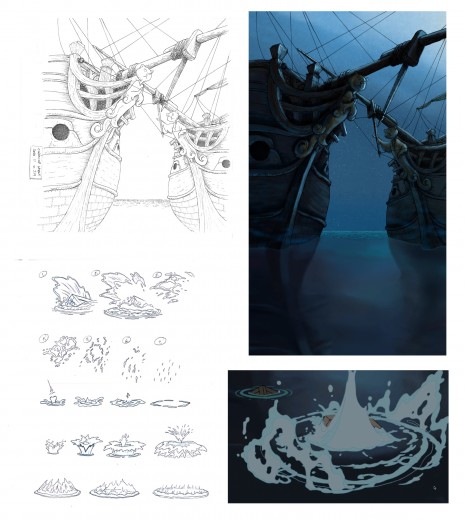
Pups of Liberty - Water Effects
Illustration (upper left) Clean-Up Layout by James Lopez
(upper right) Production Background by Barry Atkinson
(below left) water studies by James Lopez
(below right) Production still
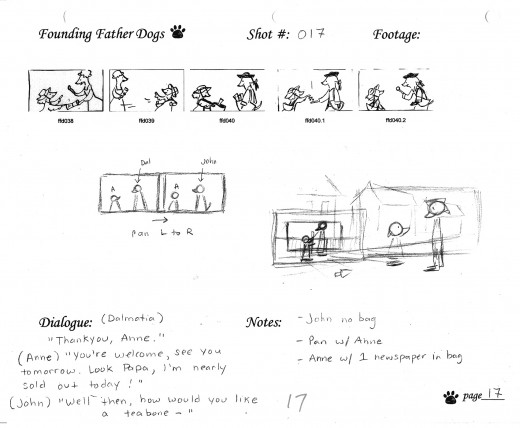
The above images represent a page from the Director’s workbook
for Sc. 17. Storyboard drawings are by Jennifer Klein.
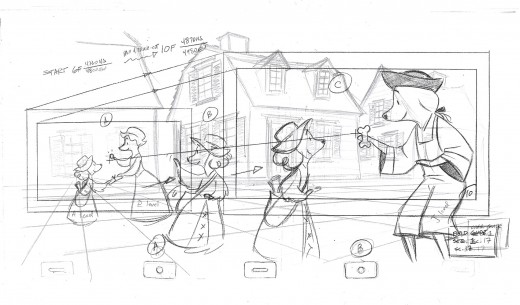
This is the Layout for Scene 17
done by James Lopez.
The QT movies below are Pencil Tests of scenes by
Mark Henn.
Right side to watch single frame.
Comic Art &Commentary 12 Nov 2011 07:44 am
Academy, Keane and Odds & Ends
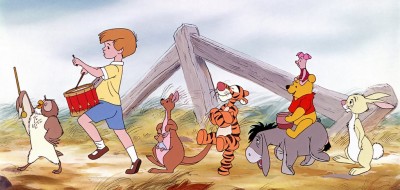
Academy voting time
- This past week was a relatively quiet one. I’ve been spending more and more of my time going to screenings for the Academy. Not only are there normal screenings at the AMPAS NY center (usually, at this time of the year, on Tuesdays and Thursdays), but there are also invited screenings. The Academy screenings have started to increase in that there are two films a night, and it gets to feel a bit like overload. I try to spread it out somewhat so that I avoid two films in one night by going to see some of the films at the invited screenings. Often present at these screenings are some of the celebrities from the films.
On Tuesday I saw the Lars Van Triers film, Melancholia – which droned on for four hours (or maybe it was just really 2’15″), and Thursday there was J. Edgar, the Clint Eastwood film with Leonardo DiCaprio. (2 hours 17 mins.) Definitely acting Oscar nominations in both films; both films had problems.
Starting next week the Animated Features begin screening. I have the DVD for Winnie the Pooh, but I’ve been trying to hold off seeing it until it’s on a big screen. As a matter of fact, that’s what I try to do with all the films, no matter how small. I try to see them all properly projected to be able to vote for them fairly. As for the feature animation, this is the first year the NY members are able to vote for the nominees in this category, so it’s something I’ll take seriously. That means I’ll have to sit through Hoodwinked 2 and The Smurfs in a theatrical setting (god help me). I do look forward to Winnie the Pooh, as I’ve said, as well as Cat In Paris on the big screen. (What can I say; I’m a 2D kinda guy.) After the theatrical screening, I’ll probably look at the DVD of W the Pooh a bit more closely.
Nest week, Between Sunday and Wednesday, there’s My Week with Marilyn, The Descendants as well as Rampart. There’s Puss In Boots and Tin Tin. To top it off, on Monday there’s a special screening dedicated to the work of Saul Bass – not Oscar related. It all starts to add up. But I’m not complaining; I actually love it and feel privileged to be able to take part in the process.
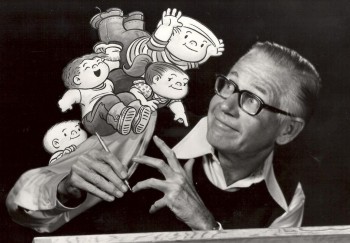 - I was saddened to learn of the death of Bill Keane, the cartoonist who created Family Circus in 1960. He was also the father of Disney animation director, Glen Keane.
- I was saddened to learn of the death of Bill Keane, the cartoonist who created Family Circus in 1960. He was also the father of Disney animation director, Glen Keane.
I was not the biggest fan of this comic strip when I was young. However, there was the Family Circus Christmas that aired one year. I thought it had one of the best stories ever done for a Christmas Special, and it gave me a new outlook on the strip. That show was directed by Al Kouzel in 1979 (Glen was one of the animators on the show). The animation isn’t very good, but the show reached out to me back then.
As a tiny tribute to Bill Keane, I’m posting this four page piece from Cartoonist Profiles, Dec. 1980 issue. It’s an edited transcript of an interview done with Bill on the Larry King Show.
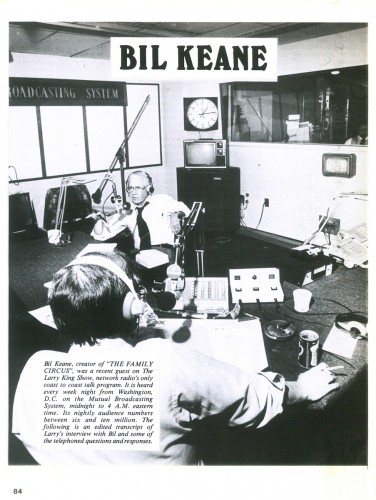 1
1Click any image to enlarge.
_____________________________
- I received this note a few days ago:
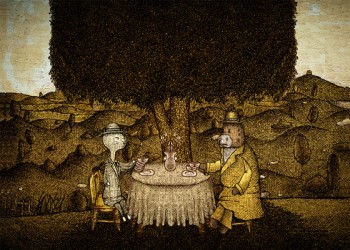 My name is John Kassab, and I was the sound designer on the Oscar winning short animated film, ‘The Lost Thing‘.
My name is John Kassab, and I was the sound designer on the Oscar winning short animated film, ‘The Lost Thing‘.
I am currently producing a wonderful animated short called ‘Cabbit‘ by emerging artist Soogie.
We are in the process of raising awareness about our Kickstarter fundraiser and wondering if you would like to check it out: here.
This is a little interview i did this week about the sound design: here.
… but we would love to get more attention for Soogie, our illustrator / writer / director / animator.
I don’t like to post Kickstarter events on this blog, so please don’t tell me about yours up and coming. There are too many films trying to raise money for me to be promoting any of them. I have my own films wanting funds and rarely mention them here. This film seems to want the funds primarily for post production.
- Bill Benzon has been writing in depth about Fantasia. On his blog, New Savannah, he’s been detailing the artistic and intellectual struggles visible in the film. Finally, he’s reached the last of the segments, the Pastoral, and he’s uncovered the sexuality just below the film’s surface. Bill writes:
- I saw the sexual undertones way back when. But it wasn¹t until I started taking frame grabs‹the last thing before I actually start writing‹that I noticed that all the thunderbolts are directed at Bacchus. And once I saw that, well, the fact that the last one exploded the vat full of grape juice . . . well, you¹ll have to read the post to see what I make of that.
He also posts that he’s going to put all of the eight segments together as a PDF. When he does that, I’ll let you know.
- Stephen Worth has started the Animation Resources blog. It’s a new place to check daily on your blog rounds. This is a way for Stephen to rekindle all the great posts from the old ASIFA Hollywood Animation Archive blog and for him to add some great new material. There was just too much good material there to let it pass on. You’ll notice it’s part of my blogroll to the right.
Daily post 09 Nov 2011 10:19 am
Mickey and the Brooms – 2
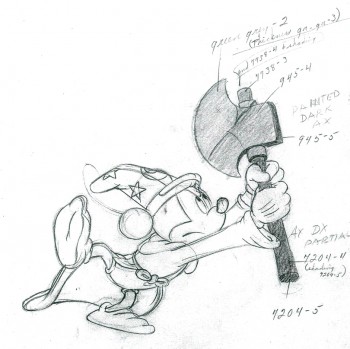
- Here I continue with the second part of Mickey’s action in this scene from Fantasia. Mickey and the brooms. The Mickey section of the scene will probably finish up next week, then on to the broom chopping shadows. There are a lot of those. We’ll keep it going until we’re done.
Riley Thomson animated this scene with an assist from Harvey Toombs.
Jim Algar directed this sequence.
This is production #2004- Seq. 7 – Scene 53. It runs 28 ft. 3 frs.
You can find out about all the scenes from Fantasia by studying the animator drafts posted in 2007 by Hans Perk on his site A Film LA, a great resource for animation study.
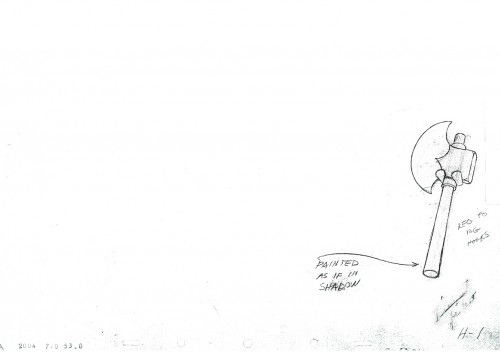 H1
H1
____________________________
The following QT incorporates all the drawings from this post
as well as the previous post, Part 1.
All drawings were exposed per the Exposure Sheets.
Books &Commentary 03 Nov 2011 06:58 am
Dad’s Daughter’s book – an Overdue Review
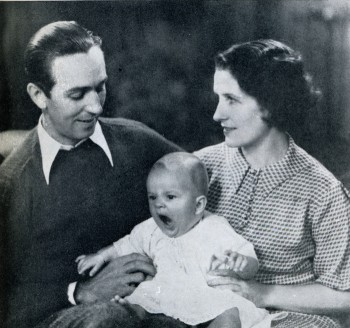 - I haven’t read the book, The Story of Walt Disney by Diane Disney Miller “as told to Pete Martin“, since it was originally published in 1957. Actually, I probably read the version that was serialized in the Saturday Evening Post in November 1956; then I most likely asked for a copy of the book for a Christmas present and read it then. After all, I was only 11.
- I haven’t read the book, The Story of Walt Disney by Diane Disney Miller “as told to Pete Martin“, since it was originally published in 1957. Actually, I probably read the version that was serialized in the Saturday Evening Post in November 1956; then I most likely asked for a copy of the book for a Christmas present and read it then. After all, I was only 11.
I remember being grabbed by the book and hooked for all time on animation. Two years later, the Bob Thomas Art of Animation would lock it up for me.
The Story of Walt Disney is an odd book to review. I wonder how much actual research went into the writing. Was it enough to have the source, Walt Disney, reveal his story verbally to Diane and Pete Miller? The voice undoubtedly comes through. The book comes off as one for youngsters; there’s an innocence in the writing that Pete Miller obviously got across. He did the writing; the book is labelled “by Diane Disney Miller as told to Pete Martin.” Martin was a writer for The Saturday Evening Post, where the book was serialized prior to its publication. Miller was also known for having collaborated with Bing Crosby on a book of memoirs before working on this Disney book.
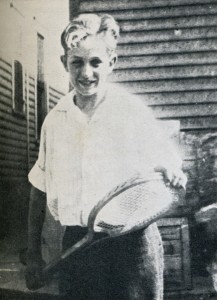 Since this book is essentially out of the mouth of Walt, we have to pay attention to some of the stories being told. What was told and what was skipped?
Since this book is essentially out of the mouth of Walt, we have to pay attention to some of the stories being told. What was told and what was skipped?
There’s quite a bit more than usual about the Red Cross service Disney did at the end of WWI.
The “Alice” series is called by the title “Alice in Cartoonland.” Unfortunately, the Disney brothers called the series the “Alice Comedies.” Even though their first short was known as “Alice’s Wonderland,” they didn’t refer to the others with any reference to Lewis Carroll’s work. That may well have been the demand of the distributor Charles Mintz even though the Disneys may have thought of the series as “Alice in Cartoonland.” Obviously, Walt referred to it as that title in telling this story.
There’s a mention of Ub Iwerks when Walt asked him to move out to LA, but there’s no mention of his name when Iwerks left Disney to open his own studio under the assistance of Pat Powers. There’s some detail in the chapter about Snow White, but barely a mention of Pinocchio or Bambi. Lots to tell about Fantasia and a bit more about Dumbo. No mention
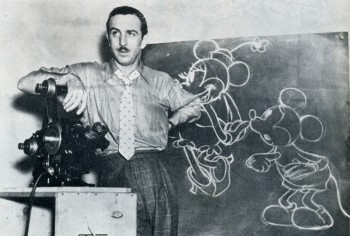 of Song of the South, Fun and Fancy Free or So Dear to My Heart, but Cinderella gets attention as do the documentary nature films. There’s an odd telling of the Disney strike in this book, and the suggestion of how the South American trip came about. In truth, the book becomes more about the juggling of money once Snow White goes into production and less about the actual films. There’s plenty of detail about going public with the stock options, and there’s a lot of detail about the government work done during WWII.
of Song of the South, Fun and Fancy Free or So Dear to My Heart, but Cinderella gets attention as do the documentary nature films. There’s an odd telling of the Disney strike in this book, and the suggestion of how the South American trip came about. In truth, the book becomes more about the juggling of money once Snow White goes into production and less about the actual films. There’s plenty of detail about going public with the stock options, and there’s a lot of detail about the government work done during WWII.
An interesting sentence comes at the beginning of the book when we read about the farm in Marcelline in hs childhood. “He can still draw a mental – or rather a sentimental – map of that whole community exactly as it was then.” This is a rare sentence by Diane commenting on her father’s recollections, and one wishes there were more like it. The last chapter of the book offers a bit more of this when Diane decides to tell a bit more about her father away from the office. What he likes to eat, how he acts, etc. There’s a lot of personality in this chapter.
One wonders how useful this book is for actual animation historians. Mike Barrier and John Canemaker have obviously read it, but do they trust the material? And why shouldn’t they, especially if there’s a second source for any of it. The story as a whole is very readable, and one rolls along easily in the telling of the tale. It’s especially entertaining. Obviously, the goal was to make the story for the largest possible audience, so details of the films were less interesting than the struggles of the imaginative entrepreneur.
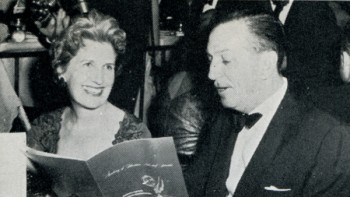 You know that “dad” enjoyed telling his daughter of all his accomplishments. So this is his version, and it’s interesting how it comes out filtered through the voices of Diane and Pete Miller. Diane’s pride in the studio is certainly as great as Walt’s.
You know that “dad” enjoyed telling his daughter of all his accomplishments. So this is his version, and it’s interesting how it comes out filtered through the voices of Diane and Pete Miller. Diane’s pride in the studio is certainly as great as Walt’s.
- “Father did the outlines of the drawings. The other two filled them in. Gradually Father gave them bigger assignments, until they were doing whole scenes themselves. Even then Father insisted upon a distinctive Disney style of drawing and photography, and he trained his two helpers to do things his way.
.
“They weren’t the only ones who have conformed to the Disney style. Almost all animated techniques since have conformed to the basic formulas that emerged from that primitive studio. Although they may vary in spirit, or another cartoon maker’s conception of what gives greater pictorial impact may differ from Father’s, they all owe a debt that goes back to the inventiveness and experimentation that went on in the back room of that converted real estate office.”
That sense of pride is understandable.
The Story of Walt Disney is actually a good read if you have a copy and haven’t seen it in years. Or you might be able to locate a copy in the library. Take the time; it moves quickly and is fun.
Commentary 01 Oct 2011 07:14 am
Animated Bits
I found this tiny piece of information in the current edition of “Kidscreen” (Sept 2011):
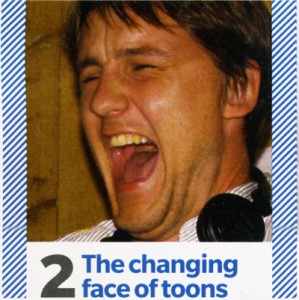
The science of animating emotions like elation, anger and
jealousy just got a little more exact. Disney has teamed up
with Carnegie Mellon University to develop a process for
animating the most expressive faces yet.
Using motion-capture footage that pinpoints and subdivides
key facial regions to build a full 3D model, it’s now possible to
alter just one part of an expression—say, a raised eyebrow—
instead of having to manipulate the whole face.
Duh!
Isn’t this something that 2D animation has been doing since “Steamboat Willie”? At least! Now that I think of it, there’s a scene in “Plane Crazy” that does it. It probably goes back to J.R. Bray . . . on second thought, I take that back. Bray’s films were more limited than H&B. But then, you could always raise an eyebrow in limited animation, couldn’t you. What a pathetic conversation. What happened to “animation”?
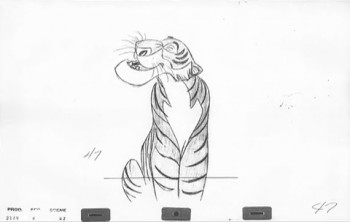 If you want to see a good example of different parts of the face moving on their own, and done to the point of brilliance, try watching this pencil test of a scene by Milt Kahl of Sher Khan. A great piece of acting, artistry, and technique combining to make something one has to watch several times just to get past the sheer power of the animation. The above illustration comes from a PT posted on Vimeo by Jamaal Bradley.
If you want to see a good example of different parts of the face moving on their own, and done to the point of brilliance, try watching this pencil test of a scene by Milt Kahl of Sher Khan. A great piece of acting, artistry, and technique combining to make something one has to watch several times just to get past the sheer power of the animation. The above illustration comes from a PT posted on Vimeo by Jamaal Bradley.
_______
As a matter of fact, you could watch any Milt Kahl scene, or Frank Thomas scene or Tissa David scene or Ed Smith scene or . . .
just watch any professional scene done in 2D animation.
- J.J. Sedelmaier has another fine article on the Imprint blog. It’s the start-to-finish breakdown of a spot designed by New Yorker cartoonist, George Booth.
_______
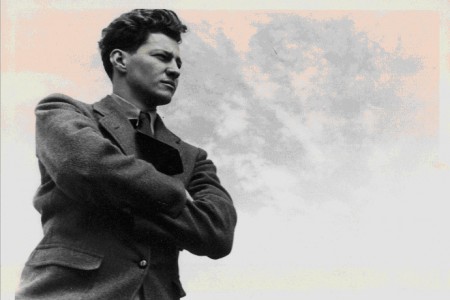
- As I wrote earlier this week, the Motion Picture Academy will present a program of Hubley films on Monday, October 10th. John Canemaker, together with Emily Hubley, has arranged an incredible show with beautiful prints. It’s also not the usual Hubley fare, with its focus on the early John Hubley, and there will be lots of surprises.
The photo, above, was in the invitation sent to me (no doubt from John Canemaker’s collection), and the information below, comes from the AMPAS magazine:
AN ACADEMY SALUTE TO JOHN HUBLEY
- Hosted by Academy Award-winning animator John Canemaker (“The Moon and the Son: An Imagined Conversation”). Co-curated by filmmaker Emily Hubley.
.
.
Hubley (1914-1977) is known primarily for two decades of film collaborations with his wife, Faith Elliott Hubley. The couple, who opened their studio in 1955, focused their animated films on such serious subject matter as the death and rebirth of the creative process, children’s awareness of their place in the world, the Cold War, overpopulation and nuclear annihilation. The resulting innovative work garnered many awards, including three Oscars (for “Moonbird,” “The Hole” and “Herb Alpert and the Tijuana Brass Double Feature”).
.
Their impressive body of work was, however, a second blossoming of the career and life of John Hubley, who had already personified new directions in animation and a rebellion against traditional Disney studio style and content.
.
During this evening celebrating Hubley’s profound and continuing impact on the art and industry of animation, Canemaker will trace Hubley’s early training and contemporary art influences, his art direction on “Pinocchio” and “Fantasia,” his involvement with the infamous 1941 strike at the Disney studio, and his innovative designs and direction in World War II training films and at the great modernist studio UPA. Canemaker will be joined onstage by one of Hubley’s daughters, Emily Hubley, and Michael Sporn, who worked closely with both John and Faith.
.
Films that will be shown have been generously provided by the Hubley family, the Museum of Modern Art, Sony Pictures and the Academy Film Archive.
Monday, October 10 7 p.m.
Academy Theater at Lighthouse International
111 East 59th Street (between Park and Lexington Avenues), New York City
.
Tickets:
$5 general admission/ $3 Academy members and students with a valid ID.
On sale now at oscars.org, by mail (form available on oscars.org) and at the door (subject to availability).
Box Office opens at 5 p.m. on night of the event. Doors open at 6:30 p.m.
.
For more information, call (212)821-9251 or e-mail ampasny@oscars.org.
.
- James Gurney on his blog, painter and author/illustrator of the Dinotopia books, got his start doing backgrounds on Bakshi’s Fire and Ice with Thomas Kinkade. He’s doing a whole series of posts on it on his blog, Gurney Journey. It’s well worth your visiting his site.
Part 4 with links to other parts.
Many thanks to Pat Rock for leading us to the link.
.
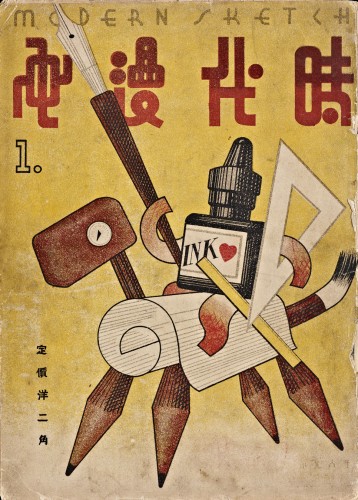
.
- Thanks to Greg Kelly for passing this link onto us. It’s for an issue of China’s Modern Sketch magazine. It’s published by MIT’s Visualizing Cultures, a unique website.
Essentially, this magazine is a Chinese edition of cartoons and cartoon art from 1934-1937.
As written in the post: “Published in Shanghai monthly from January 1934 to June 1937, Modern Sketch conveyed a range of political and social commentary through lively and sophisticated graphics. Topics included eroticized women, foreign aggression —particularly the rise of fascism in Europe and militarized Japan, domestic politics and exploitation, and modernity-at-large as envisioned through both the cosmopolitan “Modern Girl/Modern Boy†and the modernist grotesque.”
Much of this work is beautiful and worth spending some time poring over.
__
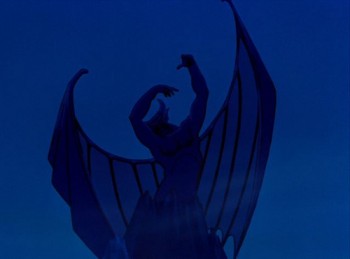
- William Benzon, on his site New Savannah, has more to say about Fantasia. The current piece is about Bill Tytla’s Chernobog in the Night On Bald Mountain segment. Beautiful images and a good read. Bill wrote me about it:
“Now I¹ve gone and done it. On the strength of Tytla¹s work I¹ve compared this segment to Milton and Shakespeare. However, since my literary critic¹s license has already been revoked (actully, I tore it up myself), they can¹t take it away from me again.”
.
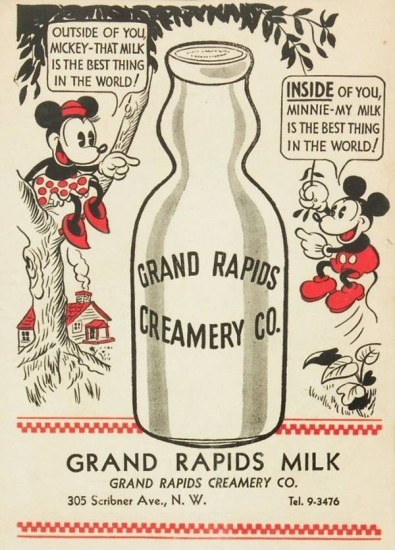
The photoshopped ad.
- Finally, here’s an ad that was posted on Boing Boing this week. Who knows when it was published or how Cory Doctorow discovered it, but it sure speaks to the power of language and how whimsically time deals with it.
That’s what my original post read. However, David Gerstein, in the comic section of this post, directed me to the actual ad before the photoshopped version of it appeared on Boing Boing. Nothing’s really what it seems on the internet.
Bill Peckmann &Comic Art &Disney 30 Sep 2011 06:50 am
Jesse Marsh comic art
Jesse Marsh was a comic artist who, principally, is known for his work on ‘Tarzan’, the comic series published by Dell. He was a self-taught artist who started working for the Disney studio in 1939. He worked on Fantasia and Pinocchio in the story department. He served in the Army as a radar specialist and was wounded with a mortar shell. After the War and a long recuperation, he returned to Disney but also worked freelance at Western Publishing. He left Disney in 1947 to work at Western, where he took charge of the TARZAN series of comic books.
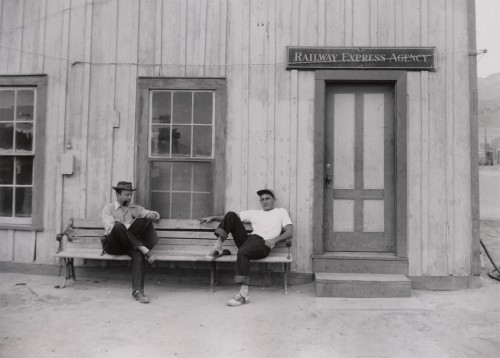
Jesse Marsh (L) and Tom Oreb (R) in the early 1940s
borrowed from Dan Nadel, posted Monday, March 29, 2010
.
Bill Peckmann sent some scans of various art by Jesse Marsh and I’m pleased to post them here. Many thanks to Bill. He writes:
-
“Before gaining success as DELL Comics’ TARZAN artist in the late 40′s and 50′s, Jesse Marsh, early in his career, worked for Disney in animation. The following material is some rarely published from that time period, They are taken from Charles Solomon’s 1995 book, The Disney That Never Was.”
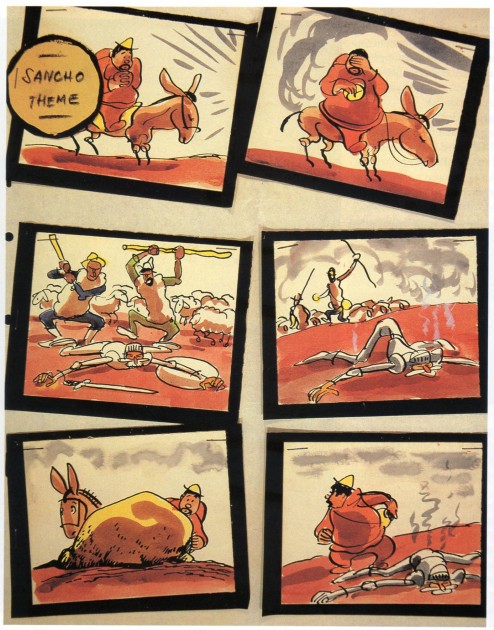
The following is the accompanying article by Solomon about Marsh’s artwork:
- In 1946, a second crew, under Jesse Marsh, returned to “Don Quixote.” This version would have been set to an adaptation of Richard Strauss’s tone poem Don Quixote: Fantastic Variations on a Theme of Knightly Character far Large Qrchestra, op. 35. Marsh prepared hundreds of neat pen-and-ink and watercolor cartoons, noting the musical themes that would accompany the action. He did enough rough storyboards for an entire film, beginning with a shot of the book resting on a table I flanked by suits of armor, and concluding with a sort of apotheosis: After Don Quixote’s death, he, Dulcinea, and Sancho Panza would ride through the clouds to a glittering castle beneath a rainbow. Like the earlier version, this incarnation of “Don Quixote” was apparently shelved before story meetings were held or dialogue prepared.
.
Preproduction work began for the third time in April 1951. This crew used an even simpler style that reflects the influence of such New Yorker cartoonists as Sol Steinberg and Otto Soglow; The rounded characters consist of little more than a few ink lines with monochromatic highlights in dull green or tan. Work on the film must have ended soon after it began, as only a few dozen drawings were completed.
The following is from the Disney True-Life Adventure comic book, 1957.
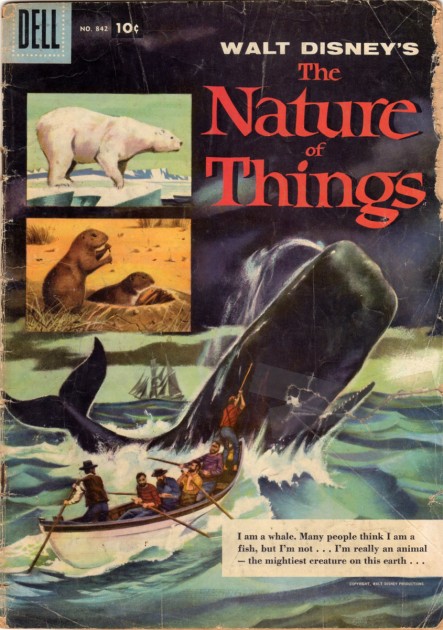
Jesse did not do the cover of this 1957 comic,
but he did do all of the 3 inside stories.
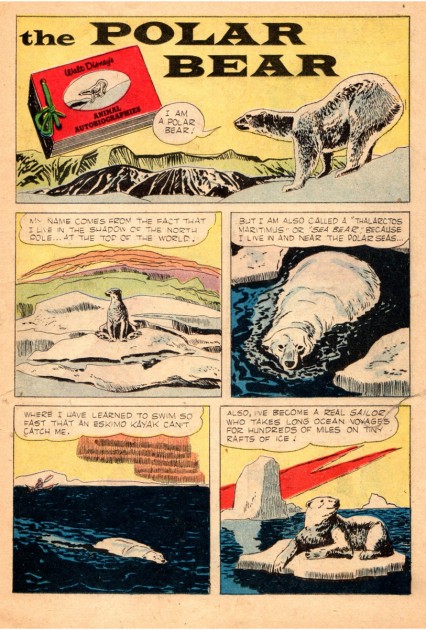 10
10
This is the first of the three stories in this book.
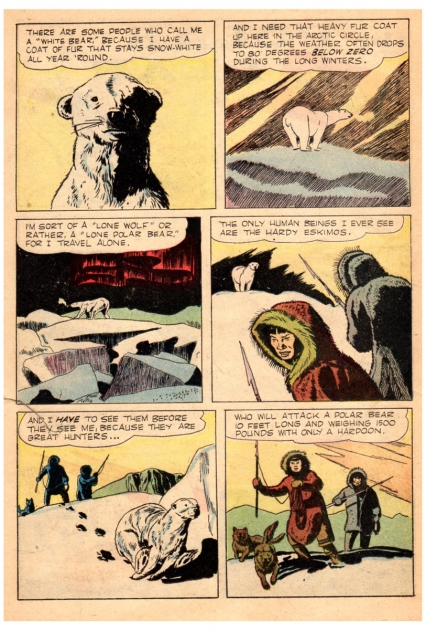 11
11
Combine Marsh’s “non slick” style with his beautiful panel and
page layout designs, and you got some impressive results.
A site called The Jesse Marsh Site offers the complete Dell TARZAN no. 1, from January 1948. This was actually the third TARZAN that Dell published.
Commentary 24 Sep 2011 07:45 am
ChatAbout Bits
- The Ottawa Animation Festival has been ongoing for the past couple of days. We have a film in the program and would have really enjoyed being part of it. However, funds are tight, and I had to pass on it this year. It’s something I’m a bit sad about, but whatcha gonna do!
Richard O’Connor at his studio blog Ace and Son, is giving a daily diary of the Festival.
Here’s day 1, day 2, you can scroll up from there for the rest.
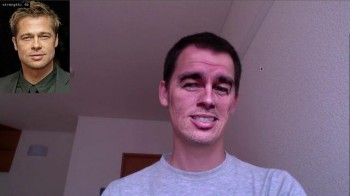 - Cartoon Brew featured a couple of videos this week that really had me thinking. Using some kind of computer animation, a couple of people replaced their faces (partially) with some celebrity parts. It was especially freaky to see some of the results. Surprisingly two of them went for a couple of the same celebrated faces: Castro, Paris Hilton, Mao, Brad Pitt et. al. The first video is more interesting than the second. The third vid shows moving facial expressions on various cartoon masks.
- Cartoon Brew featured a couple of videos this week that really had me thinking. Using some kind of computer animation, a couple of people replaced their faces (partially) with some celebrity parts. It was especially freaky to see some of the results. Surprisingly two of them went for a couple of the same celebrated faces: Castro, Paris Hilton, Mao, Brad Pitt et. al. The first video is more interesting than the second. The third vid shows moving facial expressions on various cartoon masks..
This all makes me glad that I’m in the twilight of my career. I think animation will incorporate all this motion capture stuff and will mutate into some kind of sad computation. I don’t see this stuff as animation but as Effx, and I think the industry has just gone off the tracks and walked away from any kind of real animation.
.
One commenter suggested that the early Disney stuff will someday look like garbage in comparison to what’s being done. Considering how many young people attack Snow White today, I’d have to say I agree with whoever wrote that. It’s inevitable that the people growing up with this computer nonsense will want more of that. No one will have to draw Daffy Duck in the future; just get some second rate actor to rant and put it into Daffy’s 0101010101 algorithm, and no one will ever have to draw animation again.
.
Given all the recent reading I’ve been doing about the silent Disney films, or Shamus Culhane’s bio or early Russian animation, I’ve been even more inspired to draw these days. I can imagine how frustrated I’d be with cgi if that’s what I did for a living. Given what I do work on it takes even more imagination to say I’m doing it for a living.
.
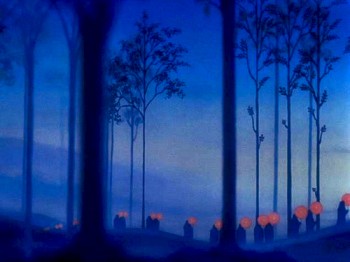
.
- Bill Benzon is back to his analyzation of Disney’s Fantasia as he comments in depth on the Ave Maria segment of the film. This is on his blog, The New Savannah. If you haven’t read his other pieces on Fantasia, you should check out the past posts.
.
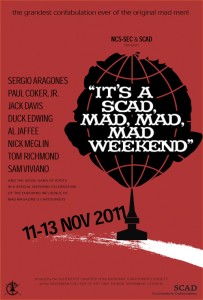
.
- Sergio Aragones, Jack Davis, Paul Coker Jr., Al Jaffee and other MAD Magazine artists will gather in a weekend long celebraion of their work at MAD. The upcoming event of the National Cartoonist’s Society event in Savannah Georgia will have special rates for members at the Courtyard Savannah Marriott Hotel.
Rooms start at $119 and are available from 11-10-2011 through 11-14-2011.
You must reserve by 10-27-2011 to take advantage of this special rate.
.
